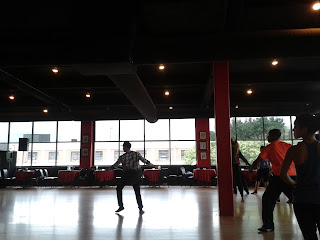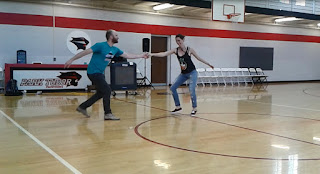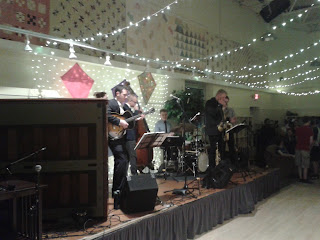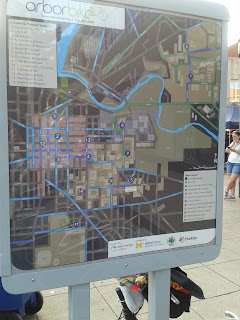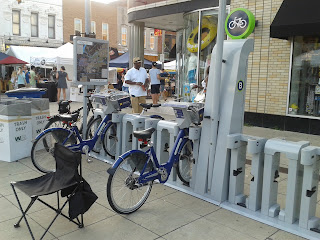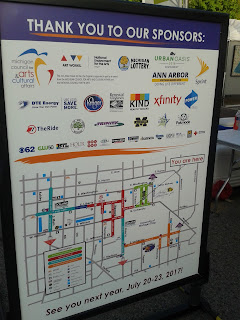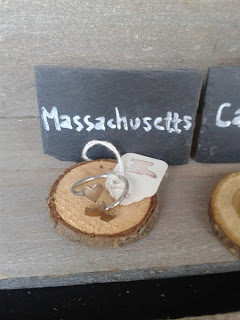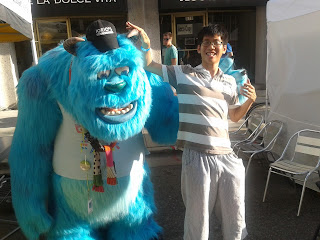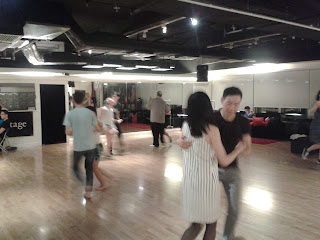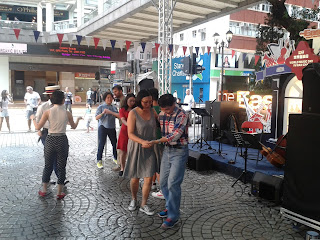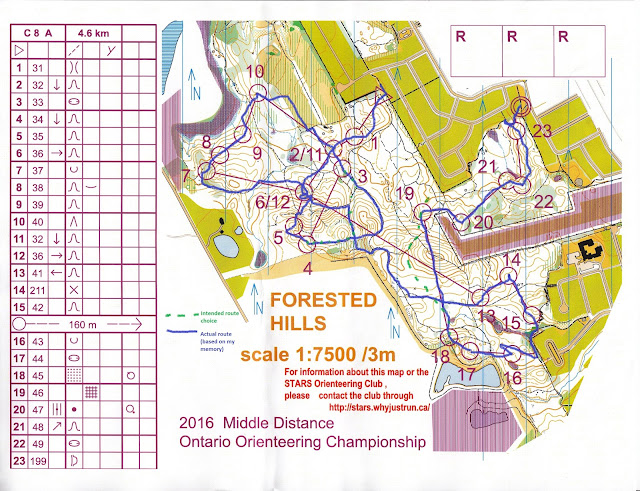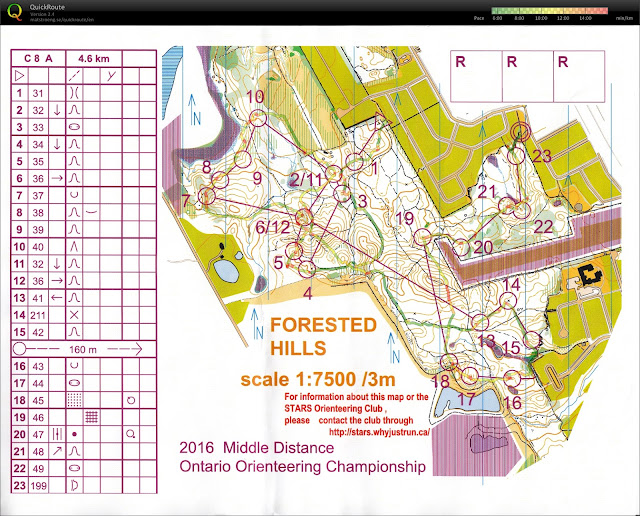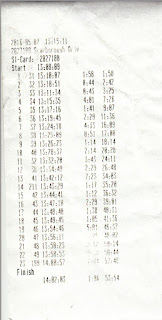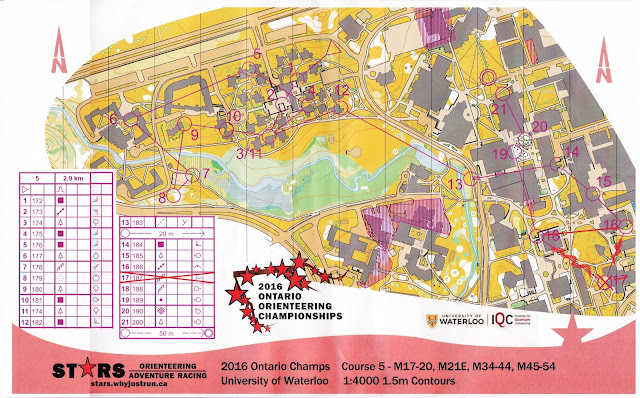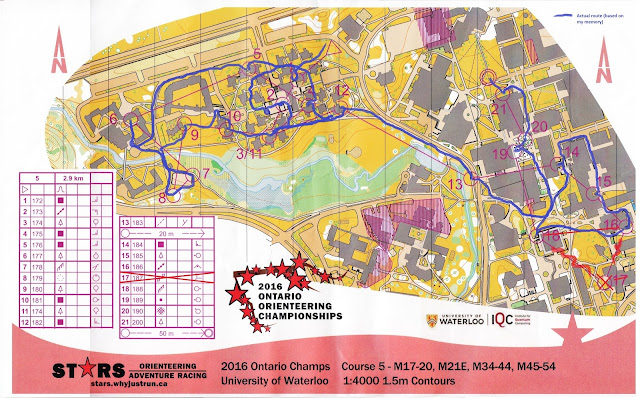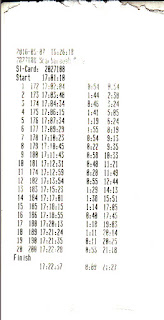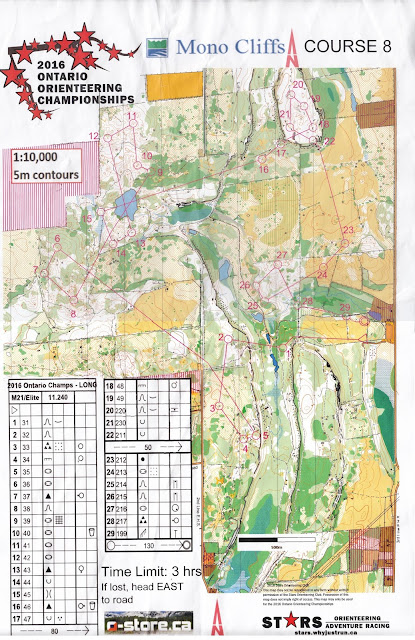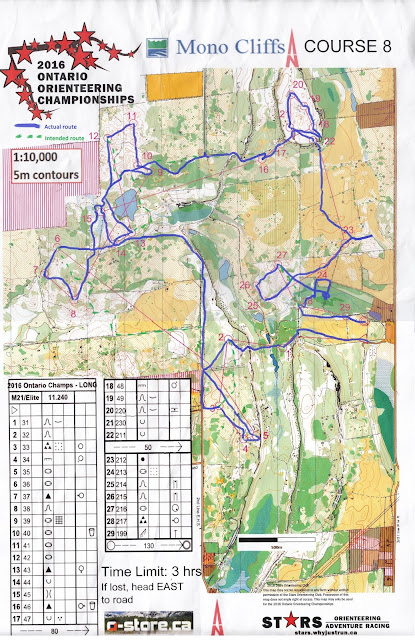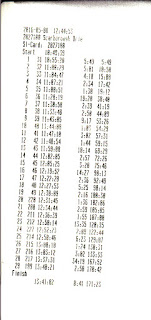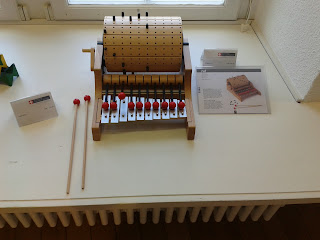Bradley University Lindy Exchange (BULX) happened in Nov 19, 2016 weekend. The university is located in Peoria, IL, which is ~ 1.5 hour drive from Champaign. When I signed up to go, I hoped that someone else from my swing club could come with me. The event was not expensive ($30), and one could volunteer to reduce the cost. Perhaps due to Thanksgiving break, I still drove on my own to this LX. I felt a bit sad, since I hoped our new members could value how dance trips helped their learning of swing culture.
To make up of going to the LX alone, I had a backup plan of getting more involved in an event. I volunteered to guard the entrance. I asked to be a DJ. I also competed for fun. This report will focus on my personal views on volunteering and competing.
Volunteering
Since my first dance volunteering in KissMe Ann Arbor, and then Whistle Stop, and then BULX, I find volunteering for a dance event valuable in many ways. Aside from getting reimbursed, helping out allowed me to see parts of the operations of dance events. When sitting at the reception table, it is not only about collecting someone's money or checking someone's wristbands, but also interacting with various dancers that I know or not. In addition, I cannot dance for the full night without feeling drained. Volunteering is a great opportunity to take a dance break. Volunteering is especially nice when you can still sit while listening to the music and watching people dance. Besides guarding the reception table, I had worked on preparing snack food and resetting a room after the event. I enjoyed these non-dance moments with people. Thus, volunteering is a double win for me -- saving some money while feeling of making good use of time in a dance event.
Besides volunteering, it was my first time to volunteer to be a DJ in a LX. Not every LX provides such opportunity, and seeing that I would like to experience playing music outside of my dance scene, I signed up for it. This was one of the reasons that I went to BULX for its entirety. At first, I had some irrational concern whether my set would fit the culture of the dance scene, but when I listened to the set before me, I was confident that my set would be fine. The music in this LX mostly respected the culture of vintage swing, and my set was designed to respect that. People were dancing on my set, so I was happy with it.
(As a side note: I should talk about my observations on training new swing DJs. I feel that the confusion of a variety of "swing" cultures in the US results in an incorrect perception that one can swing to any music. This was something that I had been wrong before. I corrected myself, and I hoped I could minimize this incorrect perception to the new generation of swing DJs. There are several bottom lines that I hold firmly for a swing scene, and the requirement of playing music that swing is one of them. This is a topic that I may write about in the future.)
Competing
I have a mix feeling on competing, even for now. Naturally, if one does not feel bored of dancing and quit, one will want to improve. Competing is a milestone that one can dance well. Although whether somebody gets the first place or second place do not necessarily mean that the first place dancer(s) is/are better than the second place, just knowing that you have entered the final round or placed before can still feel like a great accomplishment.
However, a few years of staying between social and competitive ballroom dancing make me realize that the fun of social dancing may not translate into competitive dancing. It takes months of practice, perhaps with frustration, to make myself more competitive. I feel that the time spent on being competitive is not worth it, since I have something called a Ph.D. to work on. I hope that dancing is just a recreational activity that makes me feel less stressful in life.
When I stopped doing ballroom and turned into swing, I thought swing is a very fun dance and easy to learn, but did not realize the difference between ballroom and vintage swing. The dance scene also began to be more competitive. I would like to catch up, but I was frustrated with the techniques that are different from ballroom. I already talked about this in "Why did I swing away", and the result was I stopped swing dancing for two years.
When I came back to swing, I was still cautious in competing. I did not know if my bad habit in swing dancing went away. If I know I still have major technical issues to fix in my dance, why bother competing? Moreover, I came back to swing in the hope that the swing scene can be more beginner friendly. If I compete, I may show myself as a better dancer, and make beginner more scared to me, making myself less approachable. Of course, this statement is a slippery slope that makes it false, but that was what I thought in the past. I wanted myself to be seen as friendly, and removing myself from being perceived as an elite was one of them. Thus, in the last year's BULX, even though Evan encouraged me to compete, I decided not to. I would consider competing if I could place not at the lowest level in a workshop audition. Competing costs money, and I would like to make sure that I have a chance to do well first.
So, I did pass an audition in Swing IN 2016. By that time, I also felt that being a better dancer or not do not decide whether a dancer is approachable or not, perhaps because I thought more positively when I came back to swing. Thus, I will try to compete, but make sure that competing will not result me from disliking my dancing. Moreover, I would only do Jack and Jill and not Strictly or Solo. The reason is Jack and Jill competition make you dance with several random partners, which tests lead-and-follow skills. I currently feel that Strictly and Solo are more prone to routines.
I tried novice Jack and Jill at Whistle Stop. It was fun, but I also felt some psychological stress. Although I did not get into the final, one of the follows that I danced to did get into the final. Later, she was also placed. I was happy about that.
Then, I did Jack and Jill at BULX again. These competitions made me recall the times before I left swing, when the swing classes covered how competitions were done in swing scene. In the heat round of Jack and Jill, a dancer will dance with 3-4 random dancers with different swing music. In the final round, a dancer is randomly matched with another dancer. There is an All-skate stage, when every competitors are dancing. Then, there is a Spotlight stage, where each pair dances a certain length of music alone, followed by another pair with the same segment length of the same song. The Spotlight stage will eventually change back to All-skate stage for the same song to conclude the dance.
After the heat stage, it was my time to guard the reception table. I sat there checking marks on people's hands, and did not want to think about the competition at all. I did not want my underlying competitive spirit to ruin my original purpose of dancing - to have fun.
However, when the MC announced the finalist, I was the first person to be called out. What should I do? It was my first time to be in a final.
After a random rotation, I met my partner of the final. "Hi. My name is Wangki". "Lance," he said. I met him in the Whistle Stop workshop before. He was also a follow at that time. (FYI, swing community is very active in making the dance gender-neutral. Either male or female can be a lead or follow. Even when I stopped doing swing and changed to salsa for that two years, I tried to bring the idea that "male can follow" in the salsa community. Some of my salsa friends were willing to try it.)
All-skate is fine, but I was a bit stressed out at the Spotlight stage. Lance and I were the first pair to get in. I need to device a way to dance into the center, dance for 16 bars of music, and device another way to dance out of the center. How to do it? I did not really plan, since I adapted myself to social dancing rather than competing. I also asked Lance to confirm the procedure of the competition, just making sure we were doing things right.
I think we had a lot of fun. I tried to show off as much as I could, while maintaining my fundamental connection right, especially relaxing my arms. Evan, one of my swing club's instructors, was one of the judges. I hoped there would not be any conflict of interest, so I did not talk to him throughout the competition. However, I asked him more questions about the competition when we met in Champaign after the competition. I was curious on how judges decided who performed better in the competition. What are the metrics?
In the end, Lance and I were placed second! After a lot of hand shaking, perhaps hugging, and a long bow, we discussed what prize we would get. Usually, the prizes are free entry to a certain workshop or lindy exchange. The first place picks first, and then second and third. It was so tempting to attend any of them, but I knew my time in the US was short. I could only pick the St Louis's blues workshop because it happened in February. Later, I found that I got a job in Hong Kong, and I had to go back in January to start working. Too bad that I could not take any one of the prizes!
I hope that I could do Jack and Jill again!
A very typical blog about orienteering, travelling, and dancing.
Friday, December 23, 2016
Monday, December 5, 2016
Out-of-town Dancing Report: Whistle Stop 2016 (Vintage Swing)
November 2016 was another surge of dance trips for me. The first is Whistle Stop. The second is BULX. Whistle Stop is an annual workshop organized by Purdue Night Train, the swing club of Purdue University. Weeks before this workshop, I hope there could be more people from the Illini Swing Society (ISS, the swing club of U of I) to come to this workshop. It was inexpensive when comparing to other workshops ($49), and the cast was strong (Michael and Evita, as well as Peter Strom, are well-known professional swing instructors, from my knowledge before this workshop; Michael Gamble is a famous swing band). Moreover, poor students could apply for financial assistance or volunteer to reduce the cost of the workshop.
In the end, only the people in the know went. I guess aside from money, time also determines whether one will go to a workshop. When I organized one-day weekend dance trip, there was one or even two cars going to these events. However, full-weekend trips were harder to sell. I think this is because most club members, who are undergrads, want to finish assignments on Sunday. Still, I wish a few newer ISS members can attend these workshop at least once. The greatness of a workshop should be passed on in the ISS.
The Reunion, As Usual
After traveling for swing dances several times, I have seen some familiar faces for several times. I know who drove from the east, and who drove from the west. Some of them are the Purdue locals. I may have interacted and/or danced them in the previous dance trip(s). There are also a few people that would stick to my mind.
First, there are the instructors that I met in the previous dances. Many of them are welcomed to dance with the students. I usually asked them to dance once so that I can see how great dancers dance. My courage to ask previous instructors to dance traced back to my very first traveling workshop experience, which was a WCS workshop in Chicago. My WCS instructors introduced me to the professional instructors, and encouraged me to dance with one of them. At first, I felt uneasy because I was just a newbie, and the professional would be bored. After the dance, however, I think the asking an instructor to dance was just like asking any other people to dance. Instructors are fine with being asked to dance, even if you are a baby dancer! Since then, I would try to ask at least one instructor for a dance in partner dance workshop of any kind.
Then, there are some other dancers that I hope I could dance more with. I would always try to dance with people that I met before (unless they reject dances repeatedly). That is whether they are a baby dancer or a professional. I also tried to ask several people that I have never met before to dance with. I considered this a good training for myself to test if I can tell a person is a beginner or advanced dancer based just on an initial connection, and if I can make the dance fun in either case. The moves that I give to beginner and advanced are different.
However, there is someone that I feel like I really want to be friend with. I am a bit concerned, for I began to think about this person too much.
When I first met her, I was just asking a new person to dance with. After the dance, it was just a regular "thank you for the dance" interaction. I did not even know her name. Some weeks later, I was learned from my fellow dancer that she raised the issue of creepiness on some dance floors (or, what happened about the dance. I learned her name and where I met her before during this conversation. (As a side note, I wondered how come I heard the creepiness of guys so often in the US? I seldom heard this when I was in Hong Kong. Are Hong Kong people: 1) more conservative in terms of sex, or 2) are less likely to report sexual abuse, so we heard about sexual abuse in Hong Kong much less often?) I added her as a FB friend because I would like to read some of her comments. My feeling for this is: while I mostly agree on making the dance floor safe, it may raise another issue that I would not like to see. So, I become a lurker for dance related topics...
However, the more I read, the more I agree with her wholeheartedly. Her FB is a blog itself. In the summer, I met her again in another lindy exchange. I sheepishly asked her to dance because: 1) she must be a good dancer, but I do not know if she is too good to accept me for the dance; 2) I lurk for information on FB. On the other hand, I felt that she was alone most of the time, and I hoped that she could be more involved on the dance floor.
So I danced with her. My partner connection report about her was amazing. It reminded me long time ago that some people in ballroom complimented that the instructor was "so easy to be led", and "flow so elegantly". Except, this is lindy, and it has a pulse that I usually do not resemble it as a "smooth" dance. The conclusion was that "her follow ability is beyond my level to be able to harness her potential". I am also happy to ask her to dance again, if time permits, since she is actually a nice person.
Moreover, I felt she seemed to look through me at times. I hoped that she was just watching other people dancing, but her line of sight seemed to be kept at me for a long time across the floor. I had to look away. I had a bad feeling about falling into this sinkhole of thought.
(Blogger's note: I think the original of next two previous paragraphs need some editing. These two paragraphs say something that I feel in the past about any dance scene in general, not just swing. However, the way it was written does seem that I write about the specific person. This person, however, is a counter-example of what I have written. In fact, she makes me feel the hope of the growth of the swing dance scene. Thus, I rearrange the text, and add new and important paragraph below that I should have said. Texts that have modified or added are underlined.)
Why do I think about this person too much? Perhaps it is because I care a lot about the health of a dance scene. She is certainly an advanced dancer, and she has great opinions. More importantly, I see hopes that she can be a great person to make a dance scene grow.
In my previous experiences, I am a bit concerned that some advanced follows sometimes scare away the baby leads, since such leads do not know how much force (tiny) and what part of body (at least not just legs) should be used to lead, and the follows automatically perceive this as dangerous leads. Creepy and/or forceful leads do exist, but the forceful baby leads may not know what they are doing. Such can be nuisances to advanced follows, and may deter them to dance with baby dancers. However, if the great dancers only care about peers at similar dance level and forget about the baby dancers, the baby dancers will leave, and the dance scene will not grow. For most of the people, dance is a recreational activity. If they do not find the fun of it, they will leave. Great dancers do not necessarily lead to great scene.
However, I think I will no doubt introduce her to my baby dancer friends to dance with her. She seems friendly. When I recall my first dance workshop experience, when my instructor introduced me to dance with a professional, I feel like I should do the same, i.e. to introduce the baby dancers to dance with the experienced dancers. Based on my few experiences on her friendliness, she is no doubt safe to the baby dancers. If she is shy to ask, I will try to do the job as a middle person, since I doubt that baby dancers dare to ask, too.
I got two chances to dance with her in this workshop, and I still felt happy to dance with her. My time in the US is short, and probably I will less likely see her again. However, if I have a chance to meet her again, and some ISS newbies go with me, I will certainly tell them to try to dance with her. But first, when will our baby dancers travel?
The Tricky Audition
On Saturday morning before the workshop classes, there was an audition to place dancers at different classes. There were 3 levels. This time, everyone danced for many songs, and partnered were switched many times. From my self-reflection, I could aim for the middle level. However, I kept dancing for long, but I still did not get a band.
I knew that some dancers were good, and she got a wrist band early (the color of a wrist band tells what level a person is in). Then, I kept dancing for 5-6 partners, needed to take off my clothes, came back to dance, went to drink water, and came back. However, I did not get a band.
It was strange that at some point, I could tell that some follows need refinement in swingouts. However, they were the ones who got the wrist bands. What is wrong with my swingouts?
After a long 30-minute dance, the audition was finally over. I once again became the remains. The remains are usually in the lowest level.
However, this assumption did not make sense. I knew several people who were placed in the novice Jack & Jill competitions stayed in the same class as me. When dancing with most of the people in this class, their follow skills were solid. The new hypothesis, therefore, is that those who got the first set of wrist bands are the more advanced dancer. Those who got the second set of wrist bands are the ones who need refinement of the dance. The remains are in the middle.
To test this hypothesis, I used the break time to watch the dances in the other two rooms. My observations support the hypothesis.
I bet the audition was done this way to discourage people from arguing that they are placed at the wrong level, since they thought they should be at, presumably, the lowest level. However, they were not. However, as some of my friends pointed out, asking everyone (>100) for audition tired people out.
Rebuilding a Scene
One of the highlights of this workshop was a class about building a dance scene. The class was taught by a club building expert. Zack and I were very excited for this, since we would like to listen to some more new ideas. When I came back to swing 1.5 years ago, most of the great dancers were gone, leaving a club with only ~ 20 people left. Now, the ISS is recovering, with ~ 50 people staying.
It turned out that most of the stuff that we heard were what we are doing now.
Once again, great dancers do not necessarily lead to great dance scene. Baby dancers join and stay because they find friends to stay with and find fun in learning new moves. This year, we have a great PR chair and a great pair of beginner instructors. I believe they kept many people staying after the dance classes. Having fun first, being technical second.
Most of the presentation was about how to recruit new members and retain them. However, I had at least two questions that I would like to get answers from. One of them was asked on that day. The other one was not.
The one that I asked was related to experienced dancers forming their own group, making the baby dancers feel isolated and leave. That happened at the time before I came back to the Illini Swing Society. Experienced dancers were so focused to their techniques that forgot about the beginner dancers that would like to get fun out of the dance. It seemed that some other club scene also experienced such problem, but Purdue appeared not. What had they done? Many of their dancers were still pretty good! That is also the time that I wondered the importance of a permanent figure in a dance scene. Unlike college students who mostly have 4-year lifespan, permanent figures have experience in managing the direction of a club.
The other question that I felt not asking at a good time relates specifically to the nature of swing. Do any swing club experienced competitions with the other forms of swing? The swing that we are doing relates to the swing jazz music, which has an uneven triple step feeling. However, how can you deal with another club who teaches ballroom, with a part called swing, that dances to the current music with an even triple step feel? How about people who do WCS or country swing that also dance to current music? How about those who find pretzel fun and feel that swing can be danced to any music? The U of I has another club that does east coast swing only. They dance to any music (no swing syncopation), especially fast songs. They teach moves that the vintage swing people will laugh at. Nevertheless, they attract a good number of people because the music is closer to their culture. Besides, I do not think their ideas of swing are not necessarily wrong, since they are not doing vintage swing. How should we explain our swing culture to those who are in another swing culture, without being too defensive on our view?
I feel that the last 2 questions are unresolved, and the speaker may not know the struggles between the advanced and the beginners, and among the other groups that call themselves "swing", but not vintage swing.
Office Hour and Classes
Another highlight of the workshop was the instructor office hour. People waited in line to get a chip that corresponds to an instructor of their choice. Each person with the chip could meet with the instructor for 5 minutes, and asked questions that he/she wanted. In other words, it was 5-minute private lessons.
Some instructors were popular. If I got the chip late, I might have to wait for an hour before my turn. Fortunately, I went there early, and got a chance to meet with one of the popular instructor (Evita Arce), and another one (Peter Strom).
My question was the same to both: what part of swingout I should improve on? Then, I got two different answers that I found very useful.
I know that Evita was quality assured. I met Peter for the first time, and I liked him talking about replacing basic steps with various solo jazz steps. I did not actually got into his solo jazz class, but I felt that if I met him again in another workshop, I would like his teaching.
Michael and Evita, as teaching partner, are still great and fun to watch, as usual. I found that another pair, Jenny and Dan, are also excellent instructors. In their class, they talked about variations of basic lindy movements, and my favorite part, replacing triple steps with ball drop or kick step. The latter is one kind of replacing basics with jazz steps. I wish I could see them teach again.
For Bobby and Katie's class, they talked about a dancing topic that could be contemplated for a bit. How could I keep the beginner happy if they do not proper lead/ follow something? Can I try to dance well if my partner is not helping? This is important in the social dance floor because advanced dancers also want to have fun, but it is easy to perceive having less fun with a beginner dancer. It is possible to have ways for an advanced dancer to challenge him/herself while dancing with a beginner. If the advanced dancer find such way, he/she would be more willing to dance with beginners. Having more advanced dancers to dance with the beginners will help the dance scene to grow.
In the end, only the people in the know went. I guess aside from money, time also determines whether one will go to a workshop. When I organized one-day weekend dance trip, there was one or even two cars going to these events. However, full-weekend trips were harder to sell. I think this is because most club members, who are undergrads, want to finish assignments on Sunday. Still, I wish a few newer ISS members can attend these workshop at least once. The greatness of a workshop should be passed on in the ISS.
The Reunion, As Usual
After traveling for swing dances several times, I have seen some familiar faces for several times. I know who drove from the east, and who drove from the west. Some of them are the Purdue locals. I may have interacted and/or danced them in the previous dance trip(s). There are also a few people that would stick to my mind.
First, there are the instructors that I met in the previous dances. Many of them are welcomed to dance with the students. I usually asked them to dance once so that I can see how great dancers dance. My courage to ask previous instructors to dance traced back to my very first traveling workshop experience, which was a WCS workshop in Chicago. My WCS instructors introduced me to the professional instructors, and encouraged me to dance with one of them. At first, I felt uneasy because I was just a newbie, and the professional would be bored. After the dance, however, I think the asking an instructor to dance was just like asking any other people to dance. Instructors are fine with being asked to dance, even if you are a baby dancer! Since then, I would try to ask at least one instructor for a dance in partner dance workshop of any kind.
Then, there are some other dancers that I hope I could dance more with. I would always try to dance with people that I met before (unless they reject dances repeatedly). That is whether they are a baby dancer or a professional. I also tried to ask several people that I have never met before to dance with. I considered this a good training for myself to test if I can tell a person is a beginner or advanced dancer based just on an initial connection, and if I can make the dance fun in either case. The moves that I give to beginner and advanced are different.
However, there is someone that I feel like I really want to be friend with. I am a bit concerned, for I began to think about this person too much.
When I first met her, I was just asking a new person to dance with. After the dance, it was just a regular "thank you for the dance" interaction. I did not even know her name. Some weeks later, I was learned from my fellow dancer that she raised the issue of creepiness on some dance floors (or, what happened about the dance. I learned her name and where I met her before during this conversation. (As a side note, I wondered how come I heard the creepiness of guys so often in the US? I seldom heard this when I was in Hong Kong. Are Hong Kong people: 1) more conservative in terms of sex, or 2) are less likely to report sexual abuse, so we heard about sexual abuse in Hong Kong much less often?) I added her as a FB friend because I would like to read some of her comments. My feeling for this is: while I mostly agree on making the dance floor safe, it may raise another issue that I would not like to see. So, I become a lurker for dance related topics...
However, the more I read, the more I agree with her wholeheartedly. Her FB is a blog itself. In the summer, I met her again in another lindy exchange. I sheepishly asked her to dance because: 1) she must be a good dancer, but I do not know if she is too good to accept me for the dance; 2) I lurk for information on FB. On the other hand, I felt that she was alone most of the time, and I hoped that she could be more involved on the dance floor.
So I danced with her. My partner connection report about her was amazing. It reminded me long time ago that some people in ballroom complimented that the instructor was "so easy to be led", and "flow so elegantly". Except, this is lindy, and it has a pulse that I usually do not resemble it as a "smooth" dance. The conclusion was that "her follow ability is beyond my level to be able to harness her potential". I am also happy to ask her to dance again, if time permits, since she is actually a nice person.
Moreover, I felt she seemed to look through me at times. I hoped that she was just watching other people dancing, but her line of sight seemed to be kept at me for a long time across the floor. I had to look away. I had a bad feeling about falling into this sinkhole of thought.
(Blogger's note: I think the original of next two previous paragraphs need some editing. These two paragraphs say something that I feel in the past about any dance scene in general, not just swing. However, the way it was written does seem that I write about the specific person. This person, however, is a counter-example of what I have written. In fact, she makes me feel the hope of the growth of the swing dance scene. Thus, I rearrange the text, and add new and important paragraph below that I should have said. Texts that have modified or added are underlined.)
Why do I think about this person too much? Perhaps it is because I care a lot about the health of a dance scene. She is certainly an advanced dancer, and she has great opinions. More importantly, I see hopes that she can be a great person to make a dance scene grow.
In my previous experiences, I am a bit concerned that some advanced follows sometimes scare away the baby leads, since such leads do not know how much force (tiny) and what part of body (at least not just legs) should be used to lead, and the follows automatically perceive this as dangerous leads. Creepy and/or forceful leads do exist, but the forceful baby leads may not know what they are doing. Such can be nuisances to advanced follows, and may deter them to dance with baby dancers. However, if the great dancers only care about peers at similar dance level and forget about the baby dancers, the baby dancers will leave, and the dance scene will not grow. For most of the people, dance is a recreational activity. If they do not find the fun of it, they will leave. Great dancers do not necessarily lead to great scene.
However, I think I will no doubt introduce her to my baby dancer friends to dance with her. She seems friendly. When I recall my first dance workshop experience, when my instructor introduced me to dance with a professional, I feel like I should do the same, i.e. to introduce the baby dancers to dance with the experienced dancers. Based on my few experiences on her friendliness, she is no doubt safe to the baby dancers. If she is shy to ask, I will try to do the job as a middle person, since I doubt that baby dancers dare to ask, too.
I got two chances to dance with her in this workshop, and I still felt happy to dance with her. My time in the US is short, and probably I will less likely see her again. However, if I have a chance to meet her again, and some ISS newbies go with me, I will certainly tell them to try to dance with her. But first, when will our baby dancers travel?
The Tricky Audition
On Saturday morning before the workshop classes, there was an audition to place dancers at different classes. There were 3 levels. This time, everyone danced for many songs, and partnered were switched many times. From my self-reflection, I could aim for the middle level. However, I kept dancing for long, but I still did not get a band.
I knew that some dancers were good, and she got a wrist band early (the color of a wrist band tells what level a person is in). Then, I kept dancing for 5-6 partners, needed to take off my clothes, came back to dance, went to drink water, and came back. However, I did not get a band.
It was strange that at some point, I could tell that some follows need refinement in swingouts. However, they were the ones who got the wrist bands. What is wrong with my swingouts?
After a long 30-minute dance, the audition was finally over. I once again became the remains. The remains are usually in the lowest level.
However, this assumption did not make sense. I knew several people who were placed in the novice Jack & Jill competitions stayed in the same class as me. When dancing with most of the people in this class, their follow skills were solid. The new hypothesis, therefore, is that those who got the first set of wrist bands are the more advanced dancer. Those who got the second set of wrist bands are the ones who need refinement of the dance. The remains are in the middle.
To test this hypothesis, I used the break time to watch the dances in the other two rooms. My observations support the hypothesis.
I bet the audition was done this way to discourage people from arguing that they are placed at the wrong level, since they thought they should be at, presumably, the lowest level. However, they were not. However, as some of my friends pointed out, asking everyone (>100) for audition tired people out.
Rebuilding a Scene
One of the highlights of this workshop was a class about building a dance scene. The class was taught by a club building expert. Zack and I were very excited for this, since we would like to listen to some more new ideas. When I came back to swing 1.5 years ago, most of the great dancers were gone, leaving a club with only ~ 20 people left. Now, the ISS is recovering, with ~ 50 people staying.
It turned out that most of the stuff that we heard were what we are doing now.
Once again, great dancers do not necessarily lead to great dance scene. Baby dancers join and stay because they find friends to stay with and find fun in learning new moves. This year, we have a great PR chair and a great pair of beginner instructors. I believe they kept many people staying after the dance classes. Having fun first, being technical second.
Most of the presentation was about how to recruit new members and retain them. However, I had at least two questions that I would like to get answers from. One of them was asked on that day. The other one was not.
The one that I asked was related to experienced dancers forming their own group, making the baby dancers feel isolated and leave. That happened at the time before I came back to the Illini Swing Society. Experienced dancers were so focused to their techniques that forgot about the beginner dancers that would like to get fun out of the dance. It seemed that some other club scene also experienced such problem, but Purdue appeared not. What had they done? Many of their dancers were still pretty good! That is also the time that I wondered the importance of a permanent figure in a dance scene. Unlike college students who mostly have 4-year lifespan, permanent figures have experience in managing the direction of a club.
The other question that I felt not asking at a good time relates specifically to the nature of swing. Do any swing club experienced competitions with the other forms of swing? The swing that we are doing relates to the swing jazz music, which has an uneven triple step feeling. However, how can you deal with another club who teaches ballroom, with a part called swing, that dances to the current music with an even triple step feel? How about people who do WCS or country swing that also dance to current music? How about those who find pretzel fun and feel that swing can be danced to any music? The U of I has another club that does east coast swing only. They dance to any music (no swing syncopation), especially fast songs. They teach moves that the vintage swing people will laugh at. Nevertheless, they attract a good number of people because the music is closer to their culture. Besides, I do not think their ideas of swing are not necessarily wrong, since they are not doing vintage swing. How should we explain our swing culture to those who are in another swing culture, without being too defensive on our view?
I feel that the last 2 questions are unresolved, and the speaker may not know the struggles between the advanced and the beginners, and among the other groups that call themselves "swing", but not vintage swing.
Office Hour and Classes
Another highlight of the workshop was the instructor office hour. People waited in line to get a chip that corresponds to an instructor of their choice. Each person with the chip could meet with the instructor for 5 minutes, and asked questions that he/she wanted. In other words, it was 5-minute private lessons.
Some instructors were popular. If I got the chip late, I might have to wait for an hour before my turn. Fortunately, I went there early, and got a chance to meet with one of the popular instructor (Evita Arce), and another one (Peter Strom).
My question was the same to both: what part of swingout I should improve on? Then, I got two different answers that I found very useful.
I know that Evita was quality assured. I met Peter for the first time, and I liked him talking about replacing basic steps with various solo jazz steps. I did not actually got into his solo jazz class, but I felt that if I met him again in another workshop, I would like his teaching.
Michael and Evita, as teaching partner, are still great and fun to watch, as usual. I found that another pair, Jenny and Dan, are also excellent instructors. In their class, they talked about variations of basic lindy movements, and my favorite part, replacing triple steps with ball drop or kick step. The latter is one kind of replacing basics with jazz steps. I wish I could see them teach again.
For Bobby and Katie's class, they talked about a dancing topic that could be contemplated for a bit. How could I keep the beginner happy if they do not proper lead/ follow something? Can I try to dance well if my partner is not helping? This is important in the social dance floor because advanced dancers also want to have fun, but it is easy to perceive having less fun with a beginner dancer. It is possible to have ways for an advanced dancer to challenge him/herself while dancing with a beginner. If the advanced dancer find such way, he/she would be more willing to dance with beginners. Having more advanced dancers to dance with the beginners will help the dance scene to grow.
Tuesday, September 20, 2016
Out-of-town Dancing Report: The LE 5-year Anniversary Salsa Fest
The story once again begins when I was in Hong Kong in June, when I received Facebook invite on this event. Seeing that the early bird price is not too expensive, and I have not been to any Salsa workshop before, I arranged the trip quickly, including finding an Airbnb place to stay.
The only non-lindy dance workshop that I have been to was years ago in Chicago for West Coast Swing. Now, looking back to the name of that workshop: Swing City Chicago, it makes me wonder why the swing world is so confusing. If not examining closely, one would not know whether the swing refers to West Coast Swing, East Coast Swing, Vintage Swing (e.g., lindy), or perhaps Ballroom Swing. Outsiders will probably do not know that each of the above swings has very different techniques (e.g., connection, pulses). To extrapolate, the University of Illinois has a club called Illini Swing Society. Should we make the name of the club clearer?
The Evening Dances
Back to Salsa, on Friday evening of the workshop, I went to the social dancing in downtown Indy called Riolo. I was here just two weeks ago for the Saturday late night dance of SwingIN (referring to Vintage Swing). I did not know anybody doing salsa in Indy except Susan, who used to be in the salsa scene in Champaign. Thus, I tried to dance with everyone, feeling that they were at different range of levels. In one extreme case, I felt after the dance that my level of dancing cannot harness this follow's ability. I wish I could dance with this follow again, but I guessed many people would like to dance with this follow also (sidenote: in SwingIN, I also got such feeling when dancing with a couple of advanced follows).
I did the same thing on the Saturday evening dance. After having several dances, however, I got the feeling that it is easier to ask the beginner- and intermediate-level follows to dance, but harder for more advanced follows. There are usually times when I, as a lead (or follow sometimes), would like to challenge myself by dancing with people better than me. However, they are either popular (people are in line asking for them to dance) or tired (need to skip a dance to rest). I did not dance for several songs just to hope that I could dance with a follow better than me. I hope that such reality would not deter me from asking more advanced people to dance. Days ago, I read from a list of comments about elitism in dancing. I agree that many of the elitism in the dance world is perceived (see the underlined text for why). To conclude that someone is a snob requires a burden of proof. Still, I guess the perceived elitism, whether it is real or not, may already scare beginners away in asking more advanced dancers to dance.
Each evening, there were a couple of performances. They are simply amazing.
They are my favorite instructors (besides their amazing performances). Although they taught a sequence of moves, these moves highlighted certain techniques in executing them. The sequence was not too long, so they had time to dissect these moves in details. These moves were also challenging while manageable, possibly because of the previous statement. Their class concerning the partner connection in salsa was excellent.
One concern of salsa classes is that too many moves are included, and students can do them as a routine, but cannot lead them as individual moves. I think it is because technique instruction is not adequate. Years ago when I paused my swing, I kept thinking how the techniques learned in swing can be transferred to salsa. It turns out that many techniques are universal to partner dancing: provide resistance opposite to partner's moving direction. These words once again were heard from their workshop.
(Dance technical note: In a lindy swing out, the feeling of maximum resistance happens at count 4, when the follow cannot go further back because the lead's arm resists the follow's backward movement. I do find that a lot of beginner follows fail to resist the lead's arm, so they do not feel the leads changing their direction to go forward. Similarly, in a salsa cross body lead, the feeling of maximum resistance happens at count 3, and the principle of resistance on both partners is the same: to change the movement direction from in place to forward)
Angel
His salsa sequence was more challenging, partly because this sequence is on-2, which is not what I am used to. Most places teach salsa on 1, where the left foot moves forward first. However, the salsa in New York is mainly on 2, where the left foot moves backward first. I think I can do the whole sequence with practice. He probably overestimated the ability of students in the room, and played pretty fast songs for our practice.
This guy can really spin. There were a solo dance class and a spinning technique class. These classes looked good, although I was too tired to keep spinning.
The only non-lindy dance workshop that I have been to was years ago in Chicago for West Coast Swing. Now, looking back to the name of that workshop: Swing City Chicago, it makes me wonder why the swing world is so confusing. If not examining closely, one would not know whether the swing refers to West Coast Swing, East Coast Swing, Vintage Swing (e.g., lindy), or perhaps Ballroom Swing. Outsiders will probably do not know that each of the above swings has very different techniques (e.g., connection, pulses). To extrapolate, the University of Illinois has a club called Illini Swing Society. Should we make the name of the club clearer?
The Evening Dances
Back to Salsa, on Friday evening of the workshop, I went to the social dancing in downtown Indy called Riolo. I was here just two weeks ago for the Saturday late night dance of SwingIN (referring to Vintage Swing). I did not know anybody doing salsa in Indy except Susan, who used to be in the salsa scene in Champaign. Thus, I tried to dance with everyone, feeling that they were at different range of levels. In one extreme case, I felt after the dance that my level of dancing cannot harness this follow's ability. I wish I could dance with this follow again, but I guessed many people would like to dance with this follow also (sidenote: in SwingIN, I also got such feeling when dancing with a couple of advanced follows).
I did the same thing on the Saturday evening dance. After having several dances, however, I got the feeling that it is easier to ask the beginner- and intermediate-level follows to dance, but harder for more advanced follows. There are usually times when I, as a lead (or follow sometimes), would like to challenge myself by dancing with people better than me. However, they are either popular (people are in line asking for them to dance) or tired (need to skip a dance to rest). I did not dance for several songs just to hope that I could dance with a follow better than me. I hope that such reality would not deter me from asking more advanced people to dance. Days ago, I read from a list of comments about elitism in dancing. I agree that many of the elitism in the dance world is perceived (see the underlined text for why). To conclude that someone is a snob requires a burden of proof. Still, I guess the perceived elitism, whether it is real or not, may already scare beginners away in asking more advanced dancers to dance.
Each evening, there were a couple of performances. They are simply amazing.
Such performances reminded me ballroom dancing performance in the past, when professionals wear costumes. I had some unorganized train of thoughts about how feminism activists would feel about this. Somehow I felt that the female rights are more respected in the world of swing. I am not planning to dig into this topic further. I do feel that I like vintage swing more than salsa, and perhaps gender stereotypes are one of the reasons. I would just give an example: it is rare to see a guy as a follow in Salsa (except for the advanced dancers, which I have only seen once in the evening dances).
The Instructors
Uriel and Vera (link)
They are my favorite instructors (besides their amazing performances). Although they taught a sequence of moves, these moves highlighted certain techniques in executing them. The sequence was not too long, so they had time to dissect these moves in details. These moves were also challenging while manageable, possibly because of the previous statement. Their class concerning the partner connection in salsa was excellent.
One concern of salsa classes is that too many moves are included, and students can do them as a routine, but cannot lead them as individual moves. I think it is because technique instruction is not adequate. Years ago when I paused my swing, I kept thinking how the techniques learned in swing can be transferred to salsa. It turns out that many techniques are universal to partner dancing: provide resistance opposite to partner's moving direction. These words once again were heard from their workshop.
(Dance technical note: In a lindy swing out, the feeling of maximum resistance happens at count 4, when the follow cannot go further back because the lead's arm resists the follow's backward movement. I do find that a lot of beginner follows fail to resist the lead's arm, so they do not feel the leads changing their direction to go forward. Similarly, in a salsa cross body lead, the feeling of maximum resistance happens at count 3, and the principle of resistance on both partners is the same: to change the movement direction from in place to forward)
Angel
His salsa sequence was more challenging, partly because this sequence is on-2, which is not what I am used to. Most places teach salsa on 1, where the left foot moves forward first. However, the salsa in New York is mainly on 2, where the left foot moves backward first. I think I can do the whole sequence with practice. He probably overestimated the ability of students in the room, and played pretty fast songs for our practice.
This guy can really spin. There were a solo dance class and a spinning technique class. These classes looked good, although I was too tired to keep spinning.
Saturday, September 10, 2016
Out-of-town Dancing Report: SwingIN 2016
The story begins when I was still in Hong Kong, when Leah from the Illini Swing Society mentioned the opening of registration for SwingIN, an annual vintage swing workshop in Indianapolis. I struggled a bit for registering this, since going to a workshop is a sizable expense for me. Nevertheless, I finally registered when I got back to the US, before the price went up more.
I also informed others in Swing Society that it is important to register early, not only because registration price would go up, but housing is also limited. (For those who are new to vintage swing workshops, such workshops usually have local volunteers allowing visitors to stay at their places. I do not see workshops of any other dance style, such as salsa and west coast swing, have such hosting system, so there would be additional costs in booking hotels) Despite such advice, my travel buddy, Tom, registered for the workshop at the last minute. I told him that I would not be responsible for where he would stay, but later I still tried my best to let him stay with me. I felt guilty about asking the housing coordinator and the host for an exception, but when he booked a hostel at the north side of the town, while I stayed at the east side of the town, it would be a hassle for me to make a detour for 15 - 30 minutes, especially after late night dance, when I would be back to the host at ~ 2-3 am. After such kind of guilty asking, I felt that I lost a friend who coordinated the housing.
As the events in this workshop developed, things went more and more positive. I felt that I could stay in a dance longer, including late night dances. I also found classes getting more interesting while manageable.
"Meow, who are you?"
Friday dance showed who stayed in this workshop weekend. Tom, who was in the swing scene starting from the last year, knew only a few people. For me, however, I saw more familiar faces, who were met before I paused swing dancing. I probably had seen Andy Reid for the third or fourth time in workshops (I still like his dancing philosophy, which I will mention later). I met the housing coordinator when carpooling to an event in Iowa years ago. Then, this one:
"Hello, how are you?"
"Fine, what is your name?" (I pretended that I did not know her)
"My name is Raine. How about you?"
"My name is Wangki. Not two keys but one key."
"Oh...(sounding sarcastically), how are you doing la?"
"I am okay la. Meeeowwww..."
Then, we had more discussion about the recent life. I had not seen her for years, and I did not expect to see her, but since she was there, we should talk about more on the current Illini Swing Society la.
She came from Taiwan, and she used to be in the Illini Swing Society in 2012. She moved to Purdue by the end of the academic year, and she was into swing so hard that she was one of the advanced dancers raised at that time. By that time, I was still struggling on the fundamental techniques onswingouts, to a point that I quitted swing for a while because of frustration (See Why did I swing away?). Nevertheless, she liked to meow on things a lot, at a point that "meow" means "meh".
I still gave her info about what happened after she had no contact with the Illini Swing Society. That took four or five songs to talk about during the Saturday evening dance. I would not give details here, but I once again emphasized on how important it is to get newcomers interested and to train new leaders in a transient college swing scene (in the U of Illinois, there was once a student-run salsa club. The club dissolved 3 years ago because nobody ran it). I also told her how swing helped me to improve my salsa, and then how my salsa improved my current swing dancing.
She once told me how stiff my arms were in swing dancing. This issue frustrated me for years because I started partner dancing from ballroom (and then salsa), where relaxed arms meant "spaghetti arms", making following the dance more difficult. What I did not know was that swing dancing had such unique connection that the relaxed arms were the default state. This time, after years of not meeting, she complimented me that the feel of my connection was different ... in a good way. Well, I thought about the arm relaxation of arms when I stayed with salsa (as it turned out, relaxing my arms in salsa is a bad thing).
After the newcomer competition (which I did not bother joining because I was in a constant realization that my dancing was not so great anyways), new instructors were introduced. We had the usual Andy, teaching with Mia. We had two instructors from Seattle (Brittany and Dargoff). We had two instructors from Barcelona, Spain (Gustav and Laia). We had two local blues instructors (Dexter and Shelby). There are also Jon and Mandy, but they only taught beginner classes, and I did not have a chance to see them teaching this time. I met Mandy in the last workshop in Dayton, and we did talk about dancing at the Sunday late night, but the music was too weird to dance with. Thus, next time!
The Audition Wristbands
On Saturday morning, I already had the plan of attack for this workshop. I used to think that I see no points in taking blues class, since blues dancing has the walks as the basic (similar to tango or kizomba). I did not feel I learned anything from blues class because years of dancing of different styles showed me how to use my body to lead the directions of movements. Yet, I would like to prove this wrong this time. There must be some fundamentals that I need to know for blues dancing. Given that Dexter is famous in the blues scene, I should give one more try on a blues class, and hopefully I learn something.
Large swing workshops usually have auditions because there are different levels of classes. In SwingIN, there are beginner, intermediate, advanced, and expert levels. Beginner level is usually for people who have not done lindy hop before. Intermediate level is for people who know swingouts, and they want to learn more moves and techniques about lindy hop. Advanced and expert levels are the ones that require auditions to get in, since these classes demand more techniques. There is also a blues track, which is independent of the other four levels and open to everyone.
Since the auditions were in the early afternoon, and most classes before noon was open to everyone, I used this opportunity to take the two blues track class. Then, I would try the audition for the advanced level. If I did not pass the audition and stayed in the intermediate level, I would spend more time on the blues workshop, and hope that I learn more blues vocabulary in this workshop.
As it turned out, this did not happen.
My record in audition was that I never passed the audition to the next level, so I stayed in the intermediate classes all the time. Before I left for swing, my swingout was not great because my arms were always tense. The judges of these auditions pay a lot of attentions on lindy techniques and usually not on a repertoire of moves, thus I never passed. After I came back to swing, I thought I could finally relax my arms most of the time, and created the elastic feeling of the swingout by allowing the arms to stretch. In my first workshop after the hiatus of swing in Dayton, I tried the audition again but did not pass, either. I had some doubts whether my swing really improved.
This time, before the audition, Tom and I talked about strategies of auditions (these strategies have been discussed in this blog). I also have heard in the past that it is important to do 3 swingouts and a circle at some point of the audition to show that you know how to execute the fundamental steps of lindy correctly. Sure, one should treat audition like social dancing and do some other moves (like turns), but one does not need to put many fancy moves in an audition.
Tom and I watched the expert level audition, and found that the instructors did not pick anyone out in the first few dances. We guessed this is because the instructors would like to see the average level of dancing in the group before they decided the level cutoff point.
Then, it was our turn for the advanced level audition. We danced 3 songs, and then we were asked to step out.
Tom and I once again became spectators for the expert level audition. We finally began to see instructors flying to some people to give them colored wristbands while they were dancing. They danced 3 or 4 songs, and the remaining people on the floor (who did not get into the expert audition) could stay for the advanced level audition. As usual, there would be some announcements to ease out the sad faces for those who did not get into the expert level of the workshop.
Now, it is our turn for the audition.
In the middle of the first song, I felt that one instructor, Gustav, stood behind me for a long time. I tried to stay calm and did 3 swingouts and a circle as usual. I thought I did the second four bars of the recently-learned California Routine also...
He handed me a green wristband.
Although it looked like I was still doing swingouts normally, I was internally excited. "My first time! My first time!" However, this was not the end of the story.
After the first dance, we switched to a second partner for a second song. Hoping to help the follows to pass the audition, I did more basic swingouts and circles, and let the follows shine for themselves. At the end of the song, Andy came to me. Not only that my partner got a wristband, but I got the second one! This certainly means that I did not pass the audition by luck.
At the end of the audition, I also learned that Tom also got the wristband twice, and this was his first audition experience. Together with David, we were qualified to get into the advanced class.
With this band, my plan for the workshop was totally changed. I wished I could attend more blues class, but I was more curious on how the advanced class material looks like. Both Tom and I were happy to give the audition a try.
That said, I saw a friend from Purdue who did not pass the audition. After the audition, I danced with her, and she did not want to talk about the audition anymore. This was probably the feeling that I got for all the workshop auditions that I had done before. After that afternoon of classes, I did feel that the "moves" in advanced class are manageable, and her following skill can manage them. Thus, at the evening dance, I tried some "moves" that I learned from the workshop classes, and many of them worked! I hoped that she felt less sad.
This double wristband giving means a lot to me. It gives me a feeling that my swing dance skills are no longer at a plateau. I felt that my swing could improve, even though I had stayed in swing scene for years and had felt frustrated with the fundamentals before. Now, I could perhaps set another milestone: to get placed in the beginner dance competition.
Reflection of Classes
Dexter and Shelby
I learn something about fundamental techniques about blues: the pulse that can go either upwards or downwards, and the relaxation of the upper body to create the pulse, that differ from lindy. I wish I could stay for their blues class more, but the gravity of the advanced classes was stronger.
Brittany and Dargoff
I like their lindy moves with compression of both arms, and the alternative ways to lead the follows forward in a swingout. Both of the ideas are something that I will play around in the future.
Gustav and Laia
They are the instructors from Spain, and they look happy all the time. There was a solo jazz routine class, which had some challenges but manageable. I guess I could put some of these steps into partner dancing. In another class, they talked about jazz steps as a partner dance. I found them pretty clear on what they explained, even though English is not their native languages.
I also found them approachable on the social dancing floor. Usually, I felt that advanced dancers tend to form their own group at a corner. However, I seemed to see them at every quadrant of the floor.
(A similar case is Shannon, who was met at Dayton as an instructor, but she was not teaching at this workshop. I also found her at anywhere of the floor.)
(P.S. I had a Spanish friend who started doing swing in the recent years. I asked her if she knew them. She did!)
Andy and Mia
Their classes brought me memories of the past. In one class, they talked about 8-count "rock-step-side, rock-step-side" basics. These steps were once taught in the Swing Society at the first class of beginner swing. Such 8-count steps were taught first to avoid newcomers sticking to 6-count East Coast Swing. Andy went on to talk about how these 8-count steps relate to many other partner dances (including salsa). Since these steps are fundamental, why did Swing Society returned to East Coast Swing teaching? Was that because of lack of easy moves in 8-count for people to learn?
This reflection reminds me how I feel aligned with Andy's dance philosophy: dance with the music. In another class, we explored simple close position moves (side-by-side charleston, circling) with different timings and styles of stepping. Playing moves with timing is a lot of fun. I even felt that it was Andy who brought me into the interest of swing jazz, indirectly bringing me into DJing in the local scene.
Their fast lindy class reminded me another fast lindy class a few years ago with Jamin. By that time, he did not spend a lot of time in dancing fast songs. Instead, he emphasized the importance of good technique in swingout in order to be able to do lindy fast. After that workshop, I felt that if I can do fast lindy without too much effort, that means my swingout has improved. When I returned to swing last year. I felt that I got a better understanding of swingout, and I could do swingout faster (I think that knowing how to correctly do cross body lead in salsa helps). In Andy and Mia's fast lindy class, the transition to fast lindy was quicker. After 10-15 minutes, we already danced pretty fast songs. At this advanced class, most people could manage dancing fast. In this class, I confirmed that the triple steps in swingouts are optional (especially when the song is fast).
(P.S.: I started to buy swing jazz albums at the dance scene, even though I know it is more expensive. I hope the band/ the seller could see us supporting them face-to-face. I bought two in this trip, one of them was Mia's husband's album. The other one was the live band by the Boilermakers'. I would check them out when I had time!)
"Please do not bye-bye"
Tom and I stayed with the Chief Organizer of SwingIN, Caitlin. It was expected that she would be so busy that I would not see her often at her place. We met her husband, Phil, as well as their dog and two kids. I was happy to meet them! I think I am both a pet and a kid person. When I see a dog, I would like to pet him/her. When I see a kid, I would like to play with them. What a great host to stay! The dog is big, quiet, and likes to be patted. The 7-month old baby would wake me up in the morning (a good sign, since I had experienced a younger baby who cried at any time during the normal sleeping time).
...and this 3-year-old boy, Hank. When I met him the first time, he was shy and hid himself. However, he gradually became friendly to me. After the Saturday workshop, when I would like to take a nap before the evening dance, he asked me to stay with him when sleeping. He even tried to tell me bedtime stories. Instead of taking a nap, I played with him for the rest of the afternoon.
Phil and I also have common interests to talk about. He works with installing solar panels at home. This is my first time to learn about details of solar panels. I learned that solar panels are quite affordable. Covering the rooftop of an independent garage costs similar to a new car. I also learned how readily the extra power produced by the solar panels can be fed back to the main power grid system. We went on to talk about air pollution monitoring, where he had some experience. He even followed up questions on me about my research.
When Tom and I were about to leave Indy, Hank requested me that "please do not bye-bye." I am glad that he had a lot of fun with me. If I come to Indy to dance again, I hope I will meet you again!
(P.S. In my last several hosts, I kept seeing Dominion and its expansion in their board game collections. Is Dominion an offical board game for swing dancers? Yes. I like Dominion.)
I also informed others in Swing Society that it is important to register early, not only because registration price would go up, but housing is also limited. (For those who are new to vintage swing workshops, such workshops usually have local volunteers allowing visitors to stay at their places. I do not see workshops of any other dance style, such as salsa and west coast swing, have such hosting system, so there would be additional costs in booking hotels) Despite such advice, my travel buddy, Tom, registered for the workshop at the last minute. I told him that I would not be responsible for where he would stay, but later I still tried my best to let him stay with me. I felt guilty about asking the housing coordinator and the host for an exception, but when he booked a hostel at the north side of the town, while I stayed at the east side of the town, it would be a hassle for me to make a detour for 15 - 30 minutes, especially after late night dance, when I would be back to the host at ~ 2-3 am. After such kind of guilty asking, I felt that I lost a friend who coordinated the housing.
As the events in this workshop developed, things went more and more positive. I felt that I could stay in a dance longer, including late night dances. I also found classes getting more interesting while manageable.
"Meow, who are you?"
 |
| On Friday night... |
Friday dance showed who stayed in this workshop weekend. Tom, who was in the swing scene starting from the last year, knew only a few people. For me, however, I saw more familiar faces, who were met before I paused swing dancing. I probably had seen Andy Reid for the third or fourth time in workshops (I still like his dancing philosophy, which I will mention later). I met the housing coordinator when carpooling to an event in Iowa years ago. Then, this one:
"Hello, how are you?"
"Fine, what is your name?" (I pretended that I did not know her)
"My name is Raine. How about you?"
"My name is Wangki. Not two keys but one key."
"Oh...(sounding sarcastically), how are you doing la?"
"I am okay la. Meeeowwww..."
Then, we had more discussion about the recent life. I had not seen her for years, and I did not expect to see her, but since she was there, we should talk about more on the current Illini Swing Society la.
She came from Taiwan, and she used to be in the Illini Swing Society in 2012. She moved to Purdue by the end of the academic year, and she was into swing so hard that she was one of the advanced dancers raised at that time. By that time, I was still struggling on the fundamental techniques onswingouts, to a point that I quitted swing for a while because of frustration (See Why did I swing away?). Nevertheless, she liked to meow on things a lot, at a point that "meow" means "meh".
I still gave her info about what happened after she had no contact with the Illini Swing Society. That took four or five songs to talk about during the Saturday evening dance. I would not give details here, but I once again emphasized on how important it is to get newcomers interested and to train new leaders in a transient college swing scene (in the U of Illinois, there was once a student-run salsa club. The club dissolved 3 years ago because nobody ran it). I also told her how swing helped me to improve my salsa, and then how my salsa improved my current swing dancing.
She once told me how stiff my arms were in swing dancing. This issue frustrated me for years because I started partner dancing from ballroom (and then salsa), where relaxed arms meant "spaghetti arms", making following the dance more difficult. What I did not know was that swing dancing had such unique connection that the relaxed arms were the default state. This time, after years of not meeting, she complimented me that the feel of my connection was different ... in a good way. Well, I thought about the arm relaxation of arms when I stayed with salsa (as it turned out, relaxing my arms in salsa is a bad thing).
After the newcomer competition (which I did not bother joining because I was in a constant realization that my dancing was not so great anyways), new instructors were introduced. We had the usual Andy, teaching with Mia. We had two instructors from Seattle (Brittany and Dargoff). We had two instructors from Barcelona, Spain (Gustav and Laia). We had two local blues instructors (Dexter and Shelby). There are also Jon and Mandy, but they only taught beginner classes, and I did not have a chance to see them teaching this time. I met Mandy in the last workshop in Dayton, and we did talk about dancing at the Sunday late night, but the music was too weird to dance with. Thus, next time!
The Audition Wristbands
On Saturday morning, I already had the plan of attack for this workshop. I used to think that I see no points in taking blues class, since blues dancing has the walks as the basic (similar to tango or kizomba). I did not feel I learned anything from blues class because years of dancing of different styles showed me how to use my body to lead the directions of movements. Yet, I would like to prove this wrong this time. There must be some fundamentals that I need to know for blues dancing. Given that Dexter is famous in the blues scene, I should give one more try on a blues class, and hopefully I learn something.
Large swing workshops usually have auditions because there are different levels of classes. In SwingIN, there are beginner, intermediate, advanced, and expert levels. Beginner level is usually for people who have not done lindy hop before. Intermediate level is for people who know swingouts, and they want to learn more moves and techniques about lindy hop. Advanced and expert levels are the ones that require auditions to get in, since these classes demand more techniques. There is also a blues track, which is independent of the other four levels and open to everyone.
Since the auditions were in the early afternoon, and most classes before noon was open to everyone, I used this opportunity to take the two blues track class. Then, I would try the audition for the advanced level. If I did not pass the audition and stayed in the intermediate level, I would spend more time on the blues workshop, and hope that I learn more blues vocabulary in this workshop.
As it turned out, this did not happen.
My record in audition was that I never passed the audition to the next level, so I stayed in the intermediate classes all the time. Before I left for swing, my swingout was not great because my arms were always tense. The judges of these auditions pay a lot of attentions on lindy techniques and usually not on a repertoire of moves, thus I never passed. After I came back to swing, I thought I could finally relax my arms most of the time, and created the elastic feeling of the swingout by allowing the arms to stretch. In my first workshop after the hiatus of swing in Dayton, I tried the audition again but did not pass, either. I had some doubts whether my swing really improved.
This time, before the audition, Tom and I talked about strategies of auditions (these strategies have been discussed in this blog). I also have heard in the past that it is important to do 3 swingouts and a circle at some point of the audition to show that you know how to execute the fundamental steps of lindy correctly. Sure, one should treat audition like social dancing and do some other moves (like turns), but one does not need to put many fancy moves in an audition.
 |
| Audition in action. Instructors seemed to be discussing something. |
Then, it was our turn for the advanced level audition. We danced 3 songs, and then we were asked to step out.
Tom and I once again became spectators for the expert level audition. We finally began to see instructors flying to some people to give them colored wristbands while they were dancing. They danced 3 or 4 songs, and the remaining people on the floor (who did not get into the expert audition) could stay for the advanced level audition. As usual, there would be some announcements to ease out the sad faces for those who did not get into the expert level of the workshop.
Now, it is our turn for the audition.
In the middle of the first song, I felt that one instructor, Gustav, stood behind me for a long time. I tried to stay calm and did 3 swingouts and a circle as usual. I thought I did the second four bars of the recently-learned California Routine also...
He handed me a green wristband.
Although it looked like I was still doing swingouts normally, I was internally excited. "My first time! My first time!" However, this was not the end of the story.
After the first dance, we switched to a second partner for a second song. Hoping to help the follows to pass the audition, I did more basic swingouts and circles, and let the follows shine for themselves. At the end of the song, Andy came to me. Not only that my partner got a wristband, but I got the second one! This certainly means that I did not pass the audition by luck.
At the end of the audition, I also learned that Tom also got the wristband twice, and this was his first audition experience. Together with David, we were qualified to get into the advanced class.
With this band, my plan for the workshop was totally changed. I wished I could attend more blues class, but I was more curious on how the advanced class material looks like. Both Tom and I were happy to give the audition a try.
That said, I saw a friend from Purdue who did not pass the audition. After the audition, I danced with her, and she did not want to talk about the audition anymore. This was probably the feeling that I got for all the workshop auditions that I had done before. After that afternoon of classes, I did feel that the "moves" in advanced class are manageable, and her following skill can manage them. Thus, at the evening dance, I tried some "moves" that I learned from the workshop classes, and many of them worked! I hoped that she felt less sad.
This double wristband giving means a lot to me. It gives me a feeling that my swing dance skills are no longer at a plateau. I felt that my swing could improve, even though I had stayed in swing scene for years and had felt frustrated with the fundamentals before. Now, I could perhaps set another milestone: to get placed in the beginner dance competition.
Reflection of Classes
Dexter and Shelby
 |
Brittany and Dargoff
I like their lindy moves with compression of both arms, and the alternative ways to lead the follows forward in a swingout. Both of the ideas are something that I will play around in the future.
Gustav and Laia
They are the instructors from Spain, and they look happy all the time. There was a solo jazz routine class, which had some challenges but manageable. I guess I could put some of these steps into partner dancing. In another class, they talked about jazz steps as a partner dance. I found them pretty clear on what they explained, even though English is not their native languages.
I also found them approachable on the social dancing floor. Usually, I felt that advanced dancers tend to form their own group at a corner. However, I seemed to see them at every quadrant of the floor.
(A similar case is Shannon, who was met at Dayton as an instructor, but she was not teaching at this workshop. I also found her at anywhere of the floor.)
(P.S. I had a Spanish friend who started doing swing in the recent years. I asked her if she knew them. She did!)
Andy and Mia
Their classes brought me memories of the past. In one class, they talked about 8-count "rock-step-side, rock-step-side" basics. These steps were once taught in the Swing Society at the first class of beginner swing. Such 8-count steps were taught first to avoid newcomers sticking to 6-count East Coast Swing. Andy went on to talk about how these 8-count steps relate to many other partner dances (including salsa). Since these steps are fundamental, why did Swing Society returned to East Coast Swing teaching? Was that because of lack of easy moves in 8-count for people to learn?
This reflection reminds me how I feel aligned with Andy's dance philosophy: dance with the music. In another class, we explored simple close position moves (side-by-side charleston, circling) with different timings and styles of stepping. Playing moves with timing is a lot of fun. I even felt that it was Andy who brought me into the interest of swing jazz, indirectly bringing me into DJing in the local scene.
Their fast lindy class reminded me another fast lindy class a few years ago with Jamin. By that time, he did not spend a lot of time in dancing fast songs. Instead, he emphasized the importance of good technique in swingout in order to be able to do lindy fast. After that workshop, I felt that if I can do fast lindy without too much effort, that means my swingout has improved. When I returned to swing last year. I felt that I got a better understanding of swingout, and I could do swingout faster (I think that knowing how to correctly do cross body lead in salsa helps). In Andy and Mia's fast lindy class, the transition to fast lindy was quicker. After 10-15 minutes, we already danced pretty fast songs. At this advanced class, most people could manage dancing fast. In this class, I confirmed that the triple steps in swingouts are optional (especially when the song is fast).
(P.S.: I started to buy swing jazz albums at the dance scene, even though I know it is more expensive. I hope the band/ the seller could see us supporting them face-to-face. I bought two in this trip, one of them was Mia's husband's album. The other one was the live band by the Boilermakers'. I would check them out when I had time!)
"Please do not bye-bye"
Tom and I stayed with the Chief Organizer of SwingIN, Caitlin. It was expected that she would be so busy that I would not see her often at her place. We met her husband, Phil, as well as their dog and two kids. I was happy to meet them! I think I am both a pet and a kid person. When I see a dog, I would like to pet him/her. When I see a kid, I would like to play with them. What a great host to stay! The dog is big, quiet, and likes to be patted. The 7-month old baby would wake me up in the morning (a good sign, since I had experienced a younger baby who cried at any time during the normal sleeping time).
...and this 3-year-old boy, Hank. When I met him the first time, he was shy and hid himself. However, he gradually became friendly to me. After the Saturday workshop, when I would like to take a nap before the evening dance, he asked me to stay with him when sleeping. He even tried to tell me bedtime stories. Instead of taking a nap, I played with him for the rest of the afternoon.
Phil and I also have common interests to talk about. He works with installing solar panels at home. This is my first time to learn about details of solar panels. I learned that solar panels are quite affordable. Covering the rooftop of an independent garage costs similar to a new car. I also learned how readily the extra power produced by the solar panels can be fed back to the main power grid system. We went on to talk about air pollution monitoring, where he had some experience. He even followed up questions on me about my research.
When Tom and I were about to leave Indy, Hank requested me that "please do not bye-bye." I am glad that he had a lot of fun with me. If I come to Indy to dance again, I hope I will meet you again!
(P.S. In my last several hosts, I kept seeing Dominion and its expansion in their board game collections. Is Dominion an offical board game for swing dancers? Yes. I like Dominion.)
Wednesday, July 27, 2016
Out-of-town Dancing Report: KissMe Ann Arbor 2016 (lindy exchange) + Ann Arbor Art Fair
(Note: as I wrote, I think I no longer just write about the event itself, but out-of-town dancing in general...)
The next day at 12:30 pm, I picked up Charlie and Vivian and began the journey. Charlie nicely prepared lunch for all of us. It was a different road trip than my previous road trips with other people, since the trip made me feel young again. We played many car games, stopped at a piggy ice cream place at Michigan border, slowed by the traffic due to a multi-car accident on I-94, and finally arrived at the dance place in Ann Arbor an hour later than we expected.
Then, just like any other lindy exchanges, you dance with a band till midnight, and continue blues dancing till the sun is almost out. Then, repeat on Saturday or Sunday. I would like to add that I really like the band on the Friday night (Chelsea Reed, from Philly), and I did buy a few albums for collection and swing band support. Moreover, the river dance on Sunday was cancelled because of the storm. There were unofficial river dance later in the afternoon, but I only knew about this after we got back to Illinois. The rest of this report is just a few thoughts appeared during this lindy exchange:
Runner Analogy
After running several half and full marathons, I found that dancing the entire weekend gave me a similar feeling of running long distance. Now, if I feel tired during the dance, I sit out for a couple of dances. Volunteering to prepare food and guard the door helped me to stay away from the obligation of dancing for a while. In a marathon, one has to gauge his/her speed constantly. If I run too fast, I need to remind myself to slow down. Dancing the whole weekend is similar, in that dancing too much will cause a dancer to feel tired and pain. Surprisingly, in this lindy exchange, I could stay in late night dances longer. In the past, I would skip the late night as much as possible.
Then, there is an after-race effect. I found the pain of my leg muscle after the lindy exchange, the same pain after running the marathon. I also felt tired and would like to sleep for the rest of the day. Usually in a marathon event, some free vitamin C candy would be given, and is consumed after the race. The reason is that the immunity to diseases drops after a long race. I got a similar weak feeling after a lindy exchange, too. Perhaps I should take vitamin C after a lindy exchange, too.
The analogy can also be extended to runner's blue. In Haruki Murakami's book "What I Talk About When I Talk About Running", he mentioned that he had a runner's blue after a marathon, which caused him to stop running for a long time. He did not know why it happened, although he could speculate a few things. I think I experienced such runner's blue after the race also. I have not run for months after the marathon in April. This lindy exchange gave me a similar feeling. I just feel that I do not want to dance for a while. Probably I would not stop dancing for months, but I did feel the lack of motivation to dance in the next few days. On the way back to Illinois, there is Vivian who wants to make me happy. While I really need to be grateful about this, there seems to be something chronic happening, and I think dancer's blue is part of the reasons.
The Dancers
Perhaps I found a lot of great people to dance with that made me feel empty after the entire event. One of the purposes to dance outside of your dance scene is to dance with people that you seldom dance with. There were dancers that I met before. There were also some that I had not met before, but I found the dance amazing, and would like to dance with them a few more times.
Asking people to dance in a lindy exchange event still tests my human decency. Perhaps I was trained in the first day of dancing that rejecting a dance improperly hurts people emotionally, I felt extremely irritated if a person consistently rejects a dance without a reason. The word "snob" came into my mind quite frequently if this happens, and I do have a mental blacklist that not only I will stay away with this dancer, but also tell other beginners to stay away as a warning. Unfortunately, the concept of a snob was experienced first in a swing scene, which seems to happen a lot in my region. Thus, asking people to dance is not my strength now because of the fear of rejection.
Still, sometimes I hope that it is wrong to assume "elite dancers = snobbish dancers". Thus, I sometimes still intentionally walked to an elite circle and asked someone that I trust to dance. When they said yes, the experience was amazing. Now, when I dance with a person, I can feel his/her level. Sometimes, I feel a bit regretful that I cannot harness the potential of an advanced follow, a kind of feeling that I lead something too basic to them. (Actually, recognizing that I do not know enough can be a good thing. Some people feel that they already know a lot on a topic, but actually are not.)
Conversely, when I dance with someone who shows signs of inexperience, the instinct of a perceived bad dance will come up, and I need some way to suppress it, since I do not want to be that snob. There needs to be a way to learn from the beginner so that I would be happy to dance with anyone. My experience with salsa told me that I should challenge myself the following way: lead the simplest moves such that even the true beginners will know what the lead movement leads them to do. I still feel that I do not know a lot of stuff about lindy, and leading properly in lindy is still a challenge for me.
Ann Arbor And Its Art Fair
There is no need to be nostalgic with Ann Arbor. Somehow, after the graduation in Ann Arbor, I still have opportunities to come back for various reasons. In particular, my last trip through Ann Arbor was two months ago. Nothing much is changed in such short window of time.
A happy change in the last few years is that Ann Arbor has its bikeshare stations:
Then, KissMe Ann Arbor overlapped with Ann Arbor Art Fair. From my faint memory, the Art Fair happened in the north side of the Central Campus. However, my memory may be wrong, since the Art Fair covers much larger area than I thought:
Charlie and I have lived in Ann Arbor before, so we gave a tour to Vivian, including the quietest study places in Central Campus and told her about the "M" that she might be fine to step on. We went to Pinball Petes that I still remember, but we also went to Stucchi's ice cream that I forget.
Most of the art stalls sold typical art stuff. There were still a few that attracted me to stare longer.
There are rings for geography:
There are piggy banks:
And Sulley. Monster Inc. is still the best Pixar animation in my mind. I really like this guy that usually has a good heart.
Thursday, June 30, 2016
Out-of-town Dancing Report - Hong Kong Swing (revisited)
On a Wednesday night in Hong Kong, I went to the Grappa's Cellar at Jardine House in Central. It is a bar restaurant, where the center of the restaurant has a wooden floor that is suitable for dancing. The floor is not large, so careful floor craft is needed. There is no cover. I was just reminded to buy at least a drink (a glass of sprite is HKD25, ~ USD3).
This is a place that I have been to twice. Three times before this temporary visit in Hong Kong, I had been to this place to experience swing dancing in Hong Kong. By that time, I was inexperienced in swing culture in general, and I just felt that swing was also fun in Hong Kong (I did notice that it would great to have more local people involved in swing). Now, I know that the swing that I am doing is vintage swing, which is different from west coast swing and ballroom swing in the US. Okay. I will do better to respect the vintage swing community.
I only had four weeks in this temporary visit, and I tried to participate as much as possible. In this week, there was a band consisted of 4 or 5 people playing music with us. In this swing visit, I observed the people in this dance scene, and tried to dance with several people. It was great that there is a wide range of dancer skills. On this Wednesday dance, there was also a 30-minute beginner lesson for first-timers to try. I hope these first-timers will consider taking a few lessons to explore swing dancing more!
On another Sunday night, there was another live band. This time, however, the band is big!
At this point, I started to get acquainted with several dancers. There was a lady from London called Lottie. She was fun to dance with and fun to talk to! I wondered if she was one of the swing instructors in Hong Kong. If some of you who reads this know some famous swing instructors, she is like Evita Arce. When people started to leave as the live performance came to a close, she remained staying to support them.
Then, I met a mother-and-daughter pair. The mom loves swing dancing. The daughter likes the music, but the idea of swing dancing does not interest her. The mom introduced me to more people in the swing scene. The daughter, enjoying food and music for the night, still liked to stay with her mom and respect her mom's love of swing dancing.
After going to the dance events a few more times and having some conversations, I began to think if more assistance can be done to promote the spirit of swing dancing. I checked the Hong Kong Swing website, and found that there is a swing alliance in East Asia. Unlike the U.S., where a few hours of driving can get you to another swing scene, one needs to fly to get to the next swing scene in East Asia. Here is a list of East Asian cities that have swing scene. At several dances, I heard about a workshop that will take place in Taipei, and another one in Singapore. It takes 1 and 4 hours to get to these two places from Hong Kong, respectively. One experienced dancer, who used to be in a scene in Midwest (Indianapolis, I think), told me that attending workshops is much more convenient in the US.
Another question in my mind is how many swing regulars started learning swing dancing in Hong Kong? I went to salsa dancing in Hong Kong for a few times, and I did see several guys and gals that appeared to be local. In swing, however, not as many. (I started to feel that I may write something insensitive concerning ethnicity here, but I would take a shot to be neutral.) It seemed to me that most swing regulars had danced swing for a long time (>1 year, at least, guessing based on feeling the connection between partners). Only a few seemed to be beginners.
The ratio of Asians and non-Asians is okay, around 4:6. I still hoped that more locals can involve in this dance, though. I knew Hong Kong people of my age doing amazing group dances. Perhaps swing jazz is too obscure in Hong Kong, which is more difficult to raise interest. However, I also heard that in Taiwan and South Korea, there are more locals involved in swing dancing. Something can be done to promote to the locals.
Another observation is the lack of guys. There were a lot of times to find female leads guiding female follows. I wonder if it is because leading is usually harder than following. This is especially true for swing, where the learning curve for lindy swingout is steep. I also wondered if it is a culture thing about dancing for men, but perhaps it is not true, since I did see more local male leads in Hong Kong doing salsa.
I was amazed on the number of French people in Hong Kong swing. I guessed there is 40% of the total swing people, based on my consistent asking of where they are from. If a Hong Kong local comes to this dance scene, (s)he may think swing is a French thing! With a little knowledge of French from Duolingo, I tried to comprehend what they are saying and failed. Later, I learned about the explosive growth of French community in Hong Kong in the last decade. Nevertheless, most of them are nice. If I have more time to stay, perhaps I should learn some French from them! (end of possible racial insensitivity)
Besides the bar restaurant dance floor, I went to another place in Tin Hau area on Friday, which is a dance studio, and there is a HKD 60 cover (~USD 7). Each time, there was a different DJ. The quality of the music depends on the DJ. Occasionally, there were some excellent music playing. What I remembered the most was the Shim Sham music. If one wants to dedicate his/her time in a swing scene, learning this Shim Sham line dance is important, since it is danced everywhere. In Hong Kong, I learned a few more music pieces that are suitable for Shim Sham, and I found them so fun that I asked the DJ for the source of the music.
Although it was overall fun to see a swing scene different from where I am currently at, there were some occasions where I felt the loneliness in the dance. This was akin to the sad experience in the past. I am now in Hong Kong, but when I get into a swing scene in Hong Kong, I feel that I am not in Hong Kong. Most of the time, I spoke English in the dance scene because I could not assume people in this scene know Cantonese. Moreover, swing dancing in Hong Kong brings me to a social circle that is strange to be in: there are more Asians than non-Asians. Perhaps I feel strange because when I grew up in Hong Kong, I seldom met people out of Asian origin. There seem to be a disconnection between where I am and what I am doing.
In my last Sunday in Hong Kong, there was a swing band live performance in Wan Chai. This was organized by Alliance Francaise, which, once again, gave me a geographical disconnection between the origin of swing dancing and the actual event. Nevertheless, the band sounded more like a gypsy jazz band, which closed up the geographical disconnection gap. Except the humid heat, it was still a nice outdoor dance event. Between the band and the audience chairs, there were some space that made swing dancing possible. At each band break, there was an short introduction class on swing dancing. Not many people jump in to learn. Perhaps for those who has never danced before, it can embarrass them on a busy street? Perhaps this short class was mostly taught in English, which might scare away some people?
I began to use Cantonese to talk to strangers on what swing dancing is. I also met a few more people who can speak Cantonese and are beginner to swing dancing. I feel more connected to where I am. At that moment, I had an urge to spread the swing culture to local people, but I also understood that I did not stay in Hong Kong for long.
The day before I flew back to the US, I went to the Wednesday swing for one more time, bidding farewell to people that I got acquainted with (like, adding people on Facebook). The trip left me thinking on how to make an international scene grow. I believe that swing dancing can be a lot of fun, especially for people who are interested in dancing in other types (ballroom and street dances seem more recognizable in Hong Kong).
Thursday, June 16, 2016
May 7-8, 2016 Ontario Orienteering Championship (short summary: a lot of fun, but not good runs)
(I started to write this a week after this orienteering event, but other matters made this unfinished. After a month, I just wanted to finish this without giving too much thoughts...)
Prologue
One day, Jan from Czech Republic said hi to me, asking if I am interested in the Ontario Orienteering Championship in early May. Jan once helped me a lot in maintaining the new university orienteering club in the University of Illinois, but he left two years ago after his exchange ended. Before we parted, we went to Florida for a fun trip and did an orienteering there. We learned that in Florida, off-trail choices could be scary, since we met numerous snakes. Jan even met an alligator before.
Now, he stayed in Toronto, asking me if I could visit him. Yes. The drive was long (10 hours one-way), but from my spying of Ontario maps, I would enjoy navigating through this area. He even told me that Canadian dollars were very cheap now. Thus, I participated this orienteering championship and the road trip.
(Side note: he showed me a Toronto park map that he set the course with and asked me opinions on route choices. The map looks nice as a city park!)
On May 6 (Fri), I rented a car for this long road trip, stayed at a friend's place in Michigan for a night, crossed the Canadian border the next day, and arrived at University of Waterloo area.
Middle Distance
One and a half hour before the first orienteering event, I felt very hungry in the car. Thus, I went to the rest area for a burger meal. It filled up my stomach, but I made a big mistake for not drinking enough water.
When I got to the race venue, my start was within 30 minutes. While I managed to carry basic items for orienteering (plus the GoPro camera), I did not realize the need of water before the race. Before starting, I was excited to see a new map. When I actually got started and saw the map, I was still happy that I went to the right place to challenge my orienteering skills:
Sprint
The sprint was about two hours after the middle distance. The sprint occurred at University of Waterloo, which was <10 min drive from the middle distance course. I had been here before, but it was > 8 years ago.
I was the first to start. Still, I had some time to prepare because there was a 20-min delay in start times. Before starting, I took a picture with Jan.
This time, I was well hydrated, and I could run as fast as possible. When I got started, I found a troublesome leg for Control #1-#2:
After the sprint, Jan guided me to his home in Toronto. He showed me an area that I had never been. We got some good food, and I could stay at his place for a night.
Long
Seeing that I could handle 10 km course last time in Cincinnati, I decided to take the M21 course, which is ~11 km long. The map, Mono Cliff, is at ~1 hour north of Toronto. I had an impression that maps in Canada are fun (read: complicated) to navigate. I hope I should at least enjoy the map.
At the start, we once again took a picture together. This time, the start was delayed for >40 minutes because course vetters came back late.
Here is the map. It was not as complicated as I thought. Still, at some local areas, there were still some navigational challenges. The course seems to have many short legs in the complicated area, and then one long leg to go to a new area.
Finally, here is the video. If I did not make such big mistakes, I should have the whole course taken.
Summary
Despite the negativity of my performance in Toronto area, I still enjoyed the orienteering courses in these three days. The maps, while not as complicated as I thought, still offer enough navigational challenges that I considered fun. I still felt that these 10 hours of long drive were worth of my time.
Prologue
One day, Jan from Czech Republic said hi to me, asking if I am interested in the Ontario Orienteering Championship in early May. Jan once helped me a lot in maintaining the new university orienteering club in the University of Illinois, but he left two years ago after his exchange ended. Before we parted, we went to Florida for a fun trip and did an orienteering there. We learned that in Florida, off-trail choices could be scary, since we met numerous snakes. Jan even met an alligator before.
Now, he stayed in Toronto, asking me if I could visit him. Yes. The drive was long (10 hours one-way), but from my spying of Ontario maps, I would enjoy navigating through this area. He even told me that Canadian dollars were very cheap now. Thus, I participated this orienteering championship and the road trip.
(Side note: he showed me a Toronto park map that he set the course with and asked me opinions on route choices. The map looks nice as a city park!)
On May 6 (Fri), I rented a car for this long road trip, stayed at a friend's place in Michigan for a night, crossed the Canadian border the next day, and arrived at University of Waterloo area.
Middle Distance
One and a half hour before the first orienteering event, I felt very hungry in the car. Thus, I went to the rest area for a burger meal. It filled up my stomach, but I made a big mistake for not drinking enough water.
When I got to the race venue, my start was within 30 minutes. While I managed to carry basic items for orienteering (plus the GoPro camera), I did not realize the need of water before the race. Before starting, I was excited to see a new map. When I actually got started and saw the map, I was still happy that I went to the right place to challenge my orienteering skills:
The map has a lot of contours to play with. The small map makes this a great middle-distance orienteering location, where the test of navigation skills is the focus.
Unfortunately, I felt the roughness of navigation at the beginning. To #1, I could not navigate at the correct angle, and needed the trail to reorient my direction. To #4, I made the wrong trail choice. To #5, my angle of attack deviated again. To #6, I walked back and forth to find the right gully (re-entrant).
After finding #6, my mouth started to get very dry. I started to feel that I just wanted to survive in the course, and started walking. Then, controls were not too difficult to find, but I lost the competitiveness.
Still, I overshot at #16, climbed to the highest point when going to #19 (I thought of using the ridge to reduce the climb), and to the finish, I was attracted to the wrong control next to the apartments.
Finally, I finished.
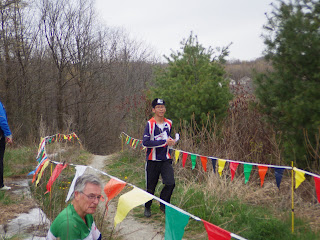 |
| Photo by Sid (the photo taker of this Championship) |
To show that I did not totally rely on my GPS watch to recall my route, I drew on the blank map first. Then, I overlaid the GPS data on the map:
Here is the GPS data. I think I forgot how I went from 12 to 13, thus I made such mistake on my hand-drawn route.
The result was not worth mentioning...
Below is the video:
Sprint
The sprint was about two hours after the middle distance. The sprint occurred at University of Waterloo, which was <10 min drive from the middle distance course. I had been here before, but it was > 8 years ago.
I was the first to start. Still, I had some time to prepare because there was a 20-min delay in start times. Before starting, I took a picture with Jan.
This time, I was well hydrated, and I could run as fast as possible. When I got started, I found a troublesome leg for Control #1-#2:
This is probably the hardest leg of the race. Finding the shortest route to #2 took time. I overshot when going from #3-#4. I thought even if I overshot one block, at least the second block should have an entrance to pass through. However, the second block was not passable. I think there is a mapping error there.
After #4, things went smoother. I could find the best routes without much of the problem. There were still detours from point to point, but the choices are just either go right or left.
I did find this sprint was fun.
Here is my hand drawn route:
...and here is my GPS record. I think they virtually match exactly.
The fastest person finished in 16 minutes, though.
Here is the video on the sprint:
After the sprint, Jan guided me to his home in Toronto. He showed me an area that I had never been. We got some good food, and I could stay at his place for a night.
Long
Seeing that I could handle 10 km course last time in Cincinnati, I decided to take the M21 course, which is ~11 km long. The map, Mono Cliff, is at ~1 hour north of Toronto. I had an impression that maps in Canada are fun (read: complicated) to navigate. I hope I should at least enjoy the map.
At the start, we once again took a picture together. This time, the start was delayed for >40 minutes because course vetters came back late.
Here is the map. It was not as complicated as I thought. Still, at some local areas, there were still some navigational challenges. The course seems to have many short legs in the complicated area, and then one long leg to go to a new area.
It was a good warm-up to Control #1. When going to Control #2, a girl asked me what to do if the control punch did not beep. I told her to use the spare mechanical punch and report the faulty control after completing the course. Then, I moved on.
I feel the first big mistake when going to #6. I was thinking of taking the more direct route through the open land, but I failed to find the path that led to this open land. Thus, I just went for the less desirable plan: run through the trail, but I still needed to climb hills twice to get to #6. Not a good route choice for me.
Then, to #13, I failed to get back to the trail as early as possible, and I failed to see that the path east of the lake is a better route choice.
At #16, I started to feel tired. From that point on, I felt that I could only walk. This set up some of the biggest mistakes happened in later legs.
To #18, there were two cliffs that were so deep that there were ribbons to forbid people to pass through. The hilltop between #17 and #22 is quite an interesting area.
Then, I felt that #23 was truly my first big mistake. Even I could locate the large and shallow depression with a man-made object on the open field, I was lost when I went downhill. It took me a long time to realize that I overshot.
Later, there were a final rounds of short legs, which I thought I navigated through them well just because I walked. In fact, overall, I thought I did fine for those technical short legs. I still had a few smaller mistakes (e.g., when approaching #7, I overshot), but I did not feel fatal.
However, I could not believe that #28 took me so long to find. It was the kind of mistake that I had not made for a while: circling through an area several times, but I still could not find the control. I thought I could use the fence to guide me to the control, but later I found that I went to the wrong fence. I tried to find the right fence, but was not successful. I also tried to use the stream to guide me to the control, but it did not work, either. Finally, I just wanted to overshoot to the open area, so that I could backtrack to #28, and found it. It took me >30 min to find this, which was unacceptable in my standard. If I did this leg again, perhaps I should trust my ability to read contours?
Here is my hand drawn route:
Here is my GPS record:
I barely finished within 3 hours. I felt that I could finish this within 2 hr 15 min if I felt well.
Summary
Despite the negativity of my performance in Toronto area, I still enjoyed the orienteering courses in these three days. The maps, while not as complicated as I thought, still offer enough navigational challenges that I considered fun. I still felt that these 10 hours of long drive were worth of my time.
Monday, June 6, 2016
16-hour layover in Zurich, Switzerland
The unexpected trip
One morning, I received an email saying that I got a job interview in Hong Kong. While I was excited, I knew I might need to spend a lot of money to come back, since I had to buy tickets at the last minute, and end of May was probably considered as high season for air tickets (some students still need to travel back home after the end of an academic year). Upon the initial search online from kayak.com, I found a ticket that costs only USD 1,000 from SWISS, which looked quite inexpensive to me. However, the route included the first flight to Zurich for 8 hours, having a long layover, and then another 11 hours of flight to Hong Kong. I checked with my frequently-used travel agent in Detroit on conventional flight routes (i.e., direct flight to Hong Kong, 14 hours, by Cathay Pacific or United Airlines), and none of them were <USD 1,000. Since (A) I had never been to Europe before, (B) a connection in Europe is even cheaper, and (C) the layover is all in the daytime, I thought it would be a good idea to make a one-day trip in another continent. I know that my passport does not need a visa to visit most (if not all) countries in Europe, so this one-day trip can work out.
Thus, I confirmed the ticket. My plane left Chicago at 2:45 pm (local time), arriving at Zurich, Switzerland at 6:40 am the next day, having some fun in Zurich until the second flight that left at 10:45 pm, and arriving in Hong Kong at 4:30 pm the day after.
At the airport
When the flight descended to Zurich, it was overcast, but snow-capped mountains could still be seen. I thought: with the lakes around this area, this looks like Seattle in the U.S (or Vancouver in Canada).
After the arrival, I had to cross the immigration check. I found that people with passports from European Union have a special line for them. After half an hour of queuing, I walked through the baggage claim, with nothing to claim, since my checked baggage could go through Switzerland to Hong Kong. I only had a backpack for these 16 hours.
Public transport is across the airport. There is a travel info center, where I could buy a one-day Zurich card. It costs CHF 24 (I could pay USD 26), and it can be used to travel to Zurich downtown, and one fare zone surrounding it, without additional cost. The airport itself is one fare zone from downtown. Moreover, it could be used for museum entry, which is mostly free, while some has discounts. Sadly, I went there on Monday, when most of the museums were closed. I still used the card to travel around a lot, though.
The train only took two stops to go from the airport to downtown, which is the train station. Some of the platforms are on the ground, while others are underground. Most of the times, buying the ticket is under honor system. I did not encounter anyone checking the tickets at all. However, according to Wikitravel, the penalty is heavy if you are found that you do not have the ticket.
Uetilburg
Next to the station, there is the Swiss National Museum that I hoped to visit, but it is closed on Monday. Thus, I walked along the river to examine the city layout. Zurich is the largest city in Switzerland. Yet, the city did not look big to me. It is difficult to find buildings that have more than 10 floors. Perhaps this is how people live in Europe.
After playing with Duolingo for two years, I think I had the ability to guess the texts in Spanish and French. I did not get to German, which was what I needed here. In this trip, I could still decipher some words in German, like Bahn=train, Bahnhof= train station, and Bahnhofstrasse (the main street in Zurich) = Station Street. "Bahn" is everywhere in Zurich. On the ground level, there are many streetcars (trams) that are also called Bahn. It was a delight for me to figure out what train to take.
My first plan was to go to a hill called Uetilburg. There is a train going there, from an elevation of ~400 m in the city to ~ 800 m at the last stop. From the stop, one may continue to hike up to a hotel with an observation tower. There were also several hiking trails. One could already find a great view of Zurich city and the large Lake Zurich from the top. Farther away, the snow-capped Swiss Alps could be seen.
I went for a short hike to find a geocache. The trails nearby were pretty steep, but guardrails and chains were there to protect people from falling. It seems to me that there would be a lot of fun to hike in Switzerland!
Lunch time
On the way back, I went to a bakery to buy and try a pastry. I did not eat it until in the evening. It costs ~ CHF 3-4. When I was at the airport, I went to Starbucks to see the price of a mocha. It was almost twice the price in the U.S. Later, when I checked the prices in Burger King at the train station, the same pattern of twice the U.S. price was also observed.
I saw several grocery stores called Coop - at the airport, at the train station, and on Bahnhofstrasse. Some of them looked like a supermarket (grocery stores much smaller than Walmart). Another one looked like a to-go food court, selling only food for lunch. The one on Bahnhofstrasse is like a department store (like Macy's), selling all kinds of clothes and having a food court on the top floor. I got a lunch there, seeing that I could use the restroom there. Most of the public restrooms (WCs) need CHF coins to use, which I did not have. Just ordering half rice and half meatballs with sauce, it already cost CHF 10. Yes, the price in Zurich was like doubling the U.S. price for everything.
After lunch, I checked the price of chocolate at this Coop basement. Some of the cheaper ones were ~CHF 2-3, while those in boxes could go up to CHF 10-15. What makes them so different?
Around Lake Zurich
In the afternoon, I went to the river and took a river and lake cruise. Zurich card covered the cost. I felt that I wanted to sleep, but I could still see the river and Lake Zurich when I tried to keep my eyes open.


There were several ferry lines on Lake Zurich. The fares are like the trains, which depends on number of fare zones crossed. On the lake, I could find the familiar mallards, but there are some ducks that I had never seen, and big white birds that are probably swans.




I was tired and my brain was not functioning. I found a large building with historical architecture. Thinking it must be a museum, I went in and being asked what I was doing. After several back-and-forth responses, I found that I was actually in an office building!
Altstadt (Old Town)
I walked back to the downtown area, where a large part is the historical Altstadt (Old Town). There are several churches in this area that are worth visiting (e.g., St. Peter's, Fraumünster, and Grossmünster). They looked huge and old.



These two pictures compare the residential area and the tourist area of Altstadt
There is a cable incline train (Polybahn) that moves people to an university area.
At this point, I found that I had not seen places for charging phone battery for a long time. Before even getting to the issue that the plug in Switzerland is different from the U.S., I found that a lot of public places do not have power outlets at all. I saw the first power outlet later in the afternoon (like 3 pm). Yes, it did not matter, since I did not have an adapter. I did not see any USB charger throughout the Zurich trip. This is good to take note of if I come to Switzerland again and use the phone often.
There is also a challenge in using free Wifi outdoors. In Zurich, to use free Wifi, one needs to provide the phone number, but visitors outside Switzerland do not have one. In this trip, I only found that Starbucks has a way to get around the phone number, and only had internet access in Zurich when I was near Starbucks.
I was happy to visit one Swiss gift shop that has many creative toys. The manual music box that can be customized is one of them. I think each of these products is also an art.
I walked up the small hill of Altstadt called Lindenhof, which provides another view of Zurich. I saw several people playing chess outside.



Main station (Hauptbahnhof, HB)
This is the transportation hub of everything in Zurich. Long-distance, international trains can be found on the ground floor.
Back to the airport
It was 8 pm. I should buy some chocolate before heading to the airport. When I went to the Coop department store, there was already a guard gesturing that the shop was closed. Argh! I forgot from the travel guide that Swiss people close shops early. Thus, I caught a tram back to the main station, knowing that shops there are the exception of closing at 8 pm.
After buying a few package of chocolate in a supermarket called Migros, I got on this train back to the airport.

It is interesting to find that at the airport, I went through first round of passport control and baggage scanning, walking through several terminals, and getting another passport control again. I guess this is how Switzerland deals with local and international flights in one airport.
Afterthoughts
It was rare for me to sleep at least 4-5 hours on the plane before waking up. The night I got back to Hong Kong, I had a wonderful sleep. It seems that having a day trip in Europe helps overcoming jet lag!
(This later proves untrue, since I did not sleep that well in the next few nights)
I still feel that if the air ticket that makes a stop in Europe is as expensive as a direct flight, I may consider doing such bonus trip again. Perhaps I would allow myself staying there for one more day.
Concerning Switzerland, I sense that the best of the fun would be outside Zurich. Upon some research, in about 2 hours of train from Zurich, I can get very close to the lakes and Swiss Alps.
(One of the research sources: Amazing Race, Season 3, Ep. 8 : Rheinfall, Zurich, Grindelwald)
One morning, I received an email saying that I got a job interview in Hong Kong. While I was excited, I knew I might need to spend a lot of money to come back, since I had to buy tickets at the last minute, and end of May was probably considered as high season for air tickets (some students still need to travel back home after the end of an academic year). Upon the initial search online from kayak.com, I found a ticket that costs only USD 1,000 from SWISS, which looked quite inexpensive to me. However, the route included the first flight to Zurich for 8 hours, having a long layover, and then another 11 hours of flight to Hong Kong. I checked with my frequently-used travel agent in Detroit on conventional flight routes (i.e., direct flight to Hong Kong, 14 hours, by Cathay Pacific or United Airlines), and none of them were <USD 1,000. Since (A) I had never been to Europe before, (B) a connection in Europe is even cheaper, and (C) the layover is all in the daytime, I thought it would be a good idea to make a one-day trip in another continent. I know that my passport does not need a visa to visit most (if not all) countries in Europe, so this one-day trip can work out.
Thus, I confirmed the ticket. My plane left Chicago at 2:45 pm (local time), arriving at Zurich, Switzerland at 6:40 am the next day, having some fun in Zurich until the second flight that left at 10:45 pm, and arriving in Hong Kong at 4:30 pm the day after.
At the airport
When the flight descended to Zurich, it was overcast, but snow-capped mountains could still be seen. I thought: with the lakes around this area, this looks like Seattle in the U.S (or Vancouver in Canada).
After the arrival, I had to cross the immigration check. I found that people with passports from European Union have a special line for them. After half an hour of queuing, I walked through the baggage claim, with nothing to claim, since my checked baggage could go through Switzerland to Hong Kong. I only had a backpack for these 16 hours.
Public transport is across the airport. There is a travel info center, where I could buy a one-day Zurich card. It costs CHF 24 (I could pay USD 26), and it can be used to travel to Zurich downtown, and one fare zone surrounding it, without additional cost. The airport itself is one fare zone from downtown. Moreover, it could be used for museum entry, which is mostly free, while some has discounts. Sadly, I went there on Monday, when most of the museums were closed. I still used the card to travel around a lot, though.
 |
| A regional train (S-Bahn) in Zurich. The screen shows the next few stops and their estimated time of arrival. |
 |
| Swiss National Museum - closed on Monday |
Next to the station, there is the Swiss National Museum that I hoped to visit, but it is closed on Monday. Thus, I walked along the river to examine the city layout. Zurich is the largest city in Switzerland. Yet, the city did not look big to me. It is difficult to find buildings that have more than 10 floors. Perhaps this is how people live in Europe.
After playing with Duolingo for two years, I think I had the ability to guess the texts in Spanish and French. I did not get to German, which was what I needed here. In this trip, I could still decipher some words in German, like Bahn=train, Bahnhof= train station, and Bahnhofstrasse (the main street in Zurich) = Station Street. "Bahn" is everywhere in Zurich. On the ground level, there are many streetcars (trams) that are also called Bahn. It was a delight for me to figure out what train to take.
My first plan was to go to a hill called Uetilburg. There is a train going there, from an elevation of ~400 m in the city to ~ 800 m at the last stop. From the stop, one may continue to hike up to a hotel with an observation tower. There were also several hiking trails. One could already find a great view of Zurich city and the large Lake Zurich from the top. Farther away, the snow-capped Swiss Alps could be seen.
I went for a short hike to find a geocache. The trails nearby were pretty steep, but guardrails and chains were there to protect people from falling. It seems to me that there would be a lot of fun to hike in Switzerland!
Lunch time
On the way back, I went to a bakery to buy and try a pastry. I did not eat it until in the evening. It costs ~ CHF 3-4. When I was at the airport, I went to Starbucks to see the price of a mocha. It was almost twice the price in the U.S. Later, when I checked the prices in Burger King at the train station, the same pattern of twice the U.S. price was also observed.
I saw several grocery stores called Coop - at the airport, at the train station, and on Bahnhofstrasse. Some of them looked like a supermarket (grocery stores much smaller than Walmart). Another one looked like a to-go food court, selling only food for lunch. The one on Bahnhofstrasse is like a department store (like Macy's), selling all kinds of clothes and having a food court on the top floor. I got a lunch there, seeing that I could use the restroom there. Most of the public restrooms (WCs) need CHF coins to use, which I did not have. Just ordering half rice and half meatballs with sauce, it already cost CHF 10. Yes, the price in Zurich was like doubling the U.S. price for everything.
After lunch, I checked the price of chocolate at this Coop basement. Some of the cheaper ones were ~CHF 2-3, while those in boxes could go up to CHF 10-15. What makes them so different?
Around Lake Zurich
In the afternoon, I went to the river and took a river and lake cruise. Zurich card covered the cost. I felt that I wanted to sleep, but I could still see the river and Lake Zurich when I tried to keep my eyes open.


There were several ferry lines on Lake Zurich. The fares are like the trains, which depends on number of fare zones crossed. On the lake, I could find the familiar mallards, but there are some ducks that I had never seen, and big white birds that are probably swans.




I was tired and my brain was not functioning. I found a large building with historical architecture. Thinking it must be a museum, I went in and being asked what I was doing. After several back-and-forth responses, I found that I was actually in an office building!
Altstadt (Old Town)
I walked back to the downtown area, where a large part is the historical Altstadt (Old Town). There are several churches in this area that are worth visiting (e.g., St. Peter's, Fraumünster, and Grossmünster). They looked huge and old.
 |
| Interior of Fraumunster |
 |
| Grossmunster |
 |
| The clocktower of St. Peter's |
I walked through the narrow streets that only allow pedestrians.



These two pictures compare the residential area and the tourist area of Altstadt
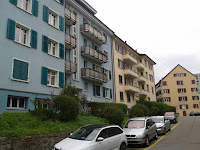 |
 |
At this point, I found that I had not seen places for charging phone battery for a long time. Before even getting to the issue that the plug in Switzerland is different from the U.S., I found that a lot of public places do not have power outlets at all. I saw the first power outlet later in the afternoon (like 3 pm). Yes, it did not matter, since I did not have an adapter. I did not see any USB charger throughout the Zurich trip. This is good to take note of if I come to Switzerland again and use the phone often.
There is also a challenge in using free Wifi outdoors. In Zurich, to use free Wifi, one needs to provide the phone number, but visitors outside Switzerland do not have one. In this trip, I only found that Starbucks has a way to get around the phone number, and only had internet access in Zurich when I was near Starbucks.
I was happy to visit one Swiss gift shop that has many creative toys. The manual music box that can be customized is one of them. I think each of these products is also an art.



Main station (Hauptbahnhof, HB)
This is the transportation hub of everything in Zurich. Long-distance, international trains can be found on the ground floor.
Below the ground floor, there are many underground shops. I peeked the Asian restaurants to see if there are any differences in interpreting Asian food between the U.S. and Switzerland. I was not sure. This place looked like Panda Express in the U.S., but the food served seems different to American Chinese.
One more floor below, there are many regional trains. Many goes to suburbs of Zurich, and some goes out of Zurich (e.g., S-Bahn).
Back to the airport
It was 8 pm. I should buy some chocolate before heading to the airport. When I went to the Coop department store, there was already a guard gesturing that the shop was closed. Argh! I forgot from the travel guide that Swiss people close shops early. Thus, I caught a tram back to the main station, knowing that shops there are the exception of closing at 8 pm.
 |
| It was still bright at 8 pm in summer! Zurich has a latitude close to Seattle, WA, US |

It is interesting to find that at the airport, I went through first round of passport control and baggage scanning, walking through several terminals, and getting another passport control again. I guess this is how Switzerland deals with local and international flights in one airport.
Afterthoughts
It was rare for me to sleep at least 4-5 hours on the plane before waking up. The night I got back to Hong Kong, I had a wonderful sleep. It seems that having a day trip in Europe helps overcoming jet lag!
(This later proves untrue, since I did not sleep that well in the next few nights)
I still feel that if the air ticket that makes a stop in Europe is as expensive as a direct flight, I may consider doing such bonus trip again. Perhaps I would allow myself staying there for one more day.
Concerning Switzerland, I sense that the best of the fun would be outside Zurich. Upon some research, in about 2 hours of train from Zurich, I can get very close to the lakes and Swiss Alps.
(One of the research sources: Amazing Race, Season 3, Ep. 8 : Rheinfall, Zurich, Grindelwald)
Subscribe to:
Comments (Atom)


